VIEWS AND PERSPECTIVES

VIEWS AND PERSPECTIVES
2022, 71 (23): 230301.
doi:10.7498/aps.71.20221900
Abstract +
SPECIAL TOPIC—Attosecond physics
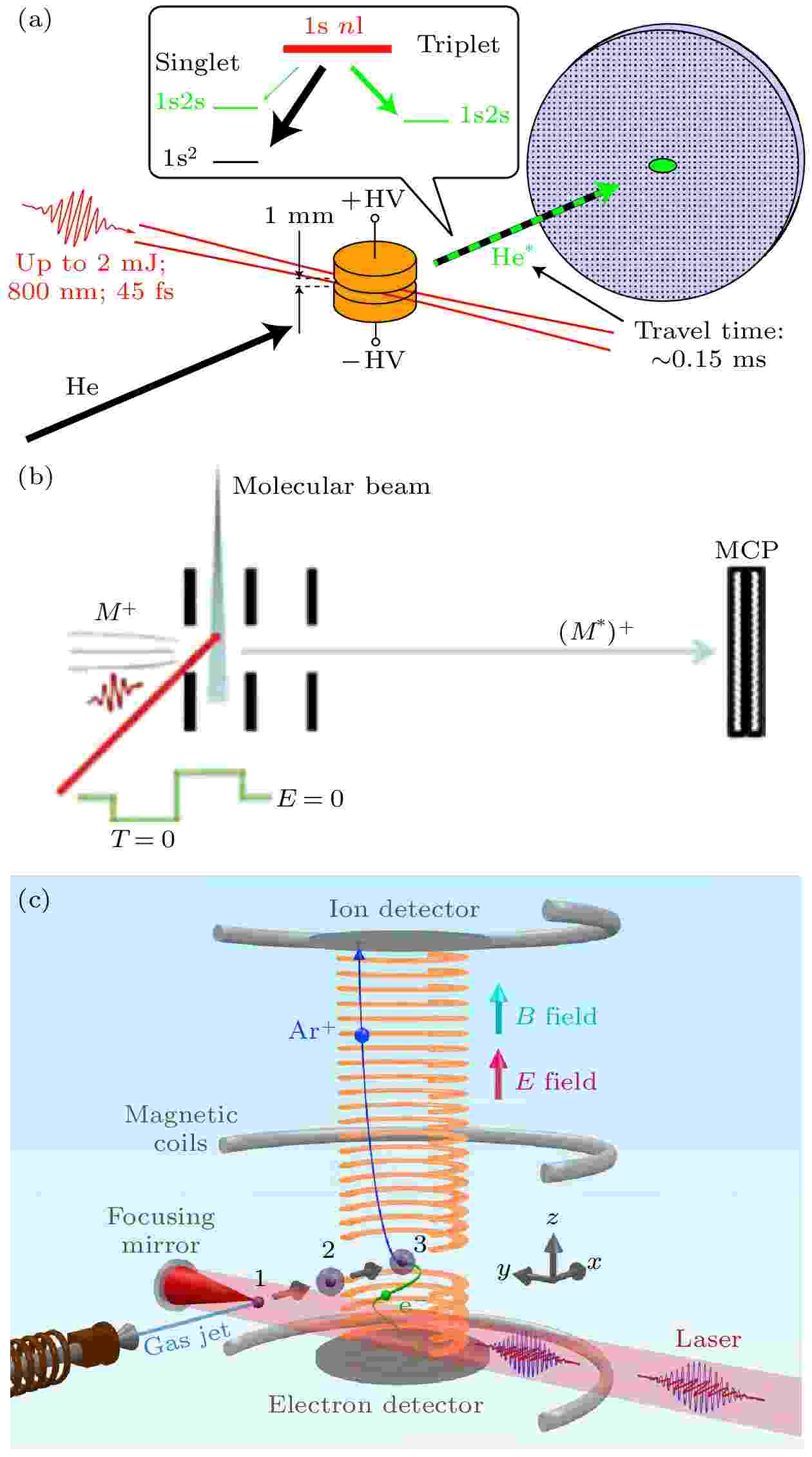
2022, 71 (23): 233202.
doi:10.7498/aps.71.20221258
Abstract +
When atoms or molecules are irradiated by a strong laser field with pulse duration of tens of femtoseconds and intensity larger than 1013W/cm2, they will generally undergo tunneling ionization, which will induce various non-perturbative and highly nonlinear phenomena. Investigations into the strong field physical processes is of significance in studying attosecond physics, molecular orbital imaging, ultrafast electron diffraction and advanced short ultraviolet light sources. While there is a relatively long history of the studies of tunneling ionization induced physics including high-order above threshold ionization (HATI), high-order harmonic generation (HHG) and non-sequential double ionization (NSDI), it is until recently to surprisedly find that in the tunneling ionization region, neutral atoms or molecules can survive in strong laser fields in highly excited Rydberg states. As a basic process of the interaction between ultrafast strong laser fields and atoms or molecules, such a Rydberg state excitation (RSE) has been viewed as an important supplement to the physical picture of the tunneling ionization. During the past several years, the extensive research attention has been paid to the RSE process in strong laser field. Various theoretical and experimental methods have been developed to investigate the strong field RSE of both atoms and molecules, to understand the underlying physical mechanism behind the recapture of the tunneling electrons and to reveal the quantum features and molecular structure effect in RSE. These advances have brought about an in-depth understanding and a systematic view of the atomic and molecular RSE in strong laser fields, as well as their relations to the other tunneling ionization induced physical processes such as ATI, HHG and NSDI. Here, we systematically review recent research progress of the atomic and molecular RSE in strong laser fields. We particularly focus on several aspects of this strong field process, i.e. the physical mechanism of the recapture, the quantum feature and the interference of different orbits, and the structure effect in molecular RSE. In addition, neutral particle acceleration and coherent radiation which can be induced by the strong field RSE, are also discussed. Finally, we provide a short summary and prospect of the future studies on the strong field RSE.
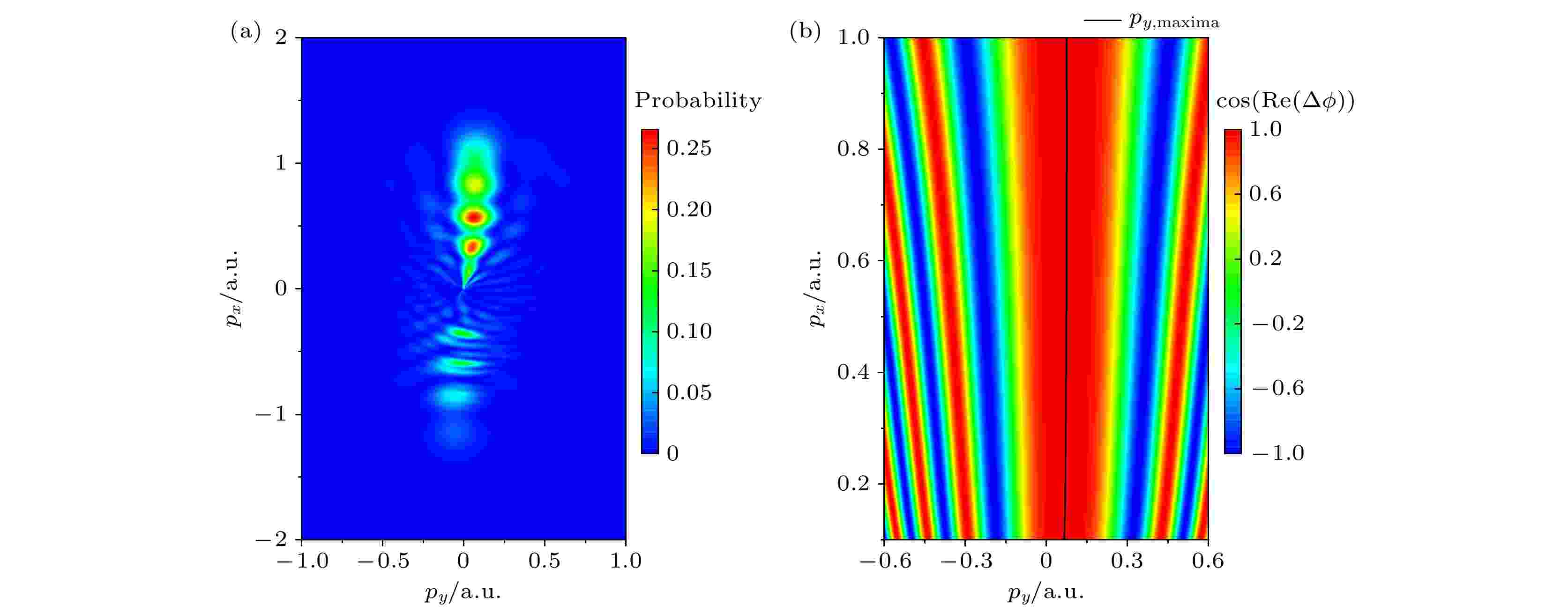
2022, 71 (23): 233206.
doi:10.7498/aps.71.20221296
Abstract +
The rescattering scenario that the ionized photoelectron is guided back to the vicinity of the atomic core under an oscillating laser field is the key to understanding strong field processes. Strong field photoelectron holography, which stems from the interference of direct and rescattering waves, has great potential applications in studying strong field physics and detecting ultrafast electron dynamics. The article develops the underlying quantum orbits interference picture. By including Coulomb potential, the uniform glory rescattering theory is introduced, which gives reasonably quantitative results in accord with time-dependent Schrödinger equation and experimental results. And reconstructing the ultrashort light pulses in the time domain with the Coulomb glory temporal gate is also studied. Deepening the understanding of strong field photoelectron holography will lead to further enlightening in ultrafast physics and contribute to future applications.
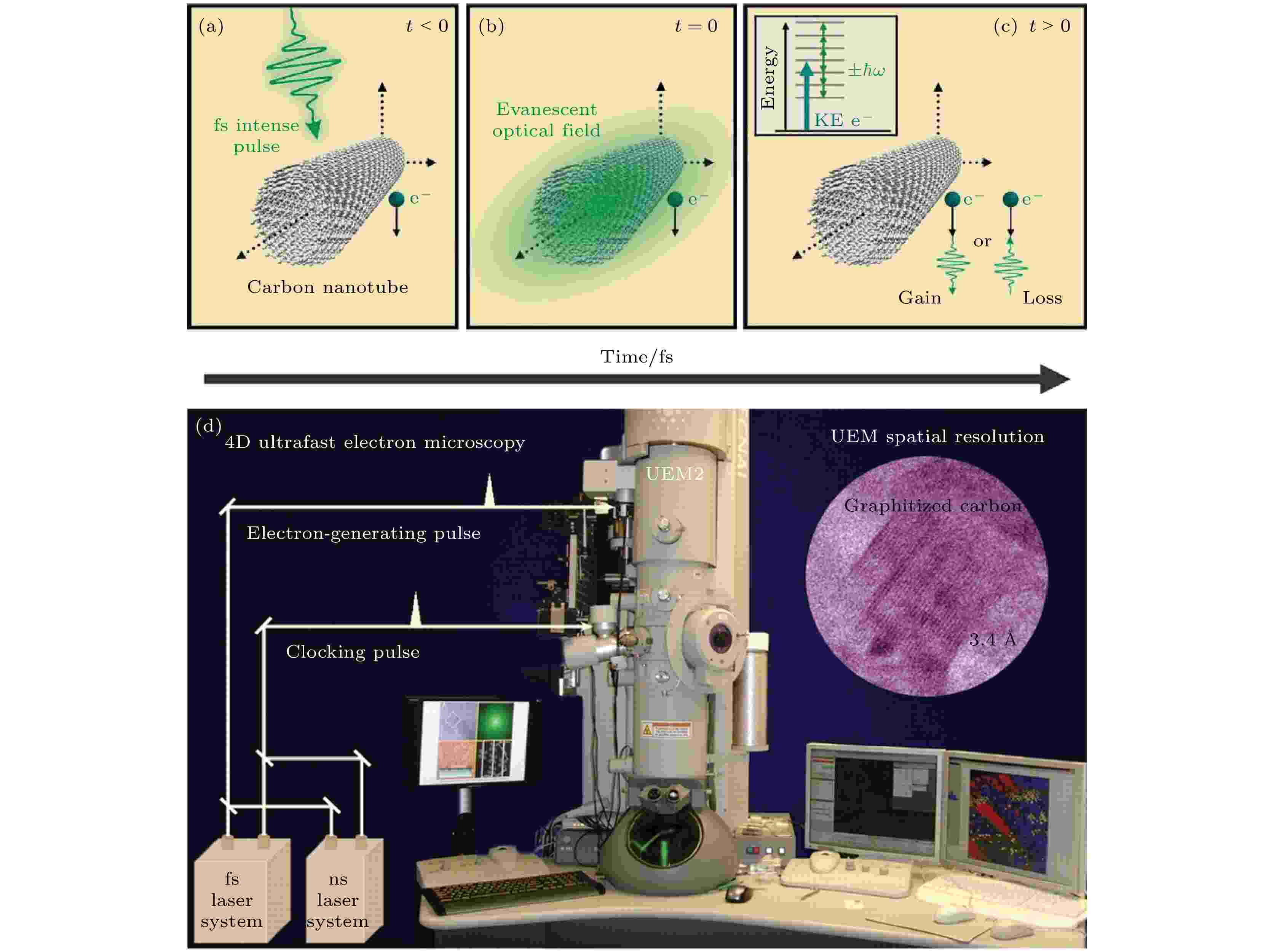
2022, 71 (23): 233302.
doi:10.7498/aps.71.20221289
Abstract +
The light-matter interaction is one of the fundamental research fields in physics. The electron is the first discovered elementary particle that makes up matter. Therefore, the interaction between electron and light field has long been the research interest of physicists. Electrons are divided into two kinds, i.e. bounded electrons and free electrons. The quantum transition of bounded electron system is constrained by the selection rules with the discrete energy levels, while the free electron systems are not. In the last decade, the experiments of photon-induced near-field electron microscopy (PINEM) have been demonstrated. The experimental setup of PINEM is based on ultrafast electron transmission microscopy (UTEM). The thoeritcal framworks have also been developed to describe the interaction between quantum free electrons and optical fields. Within macroscopic quantum electrodynamics, the concept of photon is extended to photonic quasi-particles. Solutions of maxwell's equations in medium that satisfy certain boundary conditions are called photonic quasiparticles, such as surface plasmon polaritons, phonon polaritons, or even magnetic field. The different dispersion relations of photonic quasi-particles produce abundant phenomena in the interaction between light and matter. The underlying information about the PINEM interaction can be inferred from the electron energy loss spectrum (EELS). It has been used for implementing the near-field imaging in its infancy. By now it is capable of not only realizing time-resolved dynamic imaging, reconstructing the dispersion relation of photonics crystal and its Bloch mode, but also measuring the mode lifetime directly. The PINEM has also been used to study free electron wavepacket reshaping, free electron comb, free electron attosecond pulse train, etc. Recently, this field has entered into the era of quantum optics, and people use PINEM to study novel phenomena in quantum optics, such as entanglement between free electrons and cavity photons, entanglement between free electrons and free electrons, free electron qubits, and preparation of novel light quantum states. In this paper, the theoretical and experimental development of free-electron quantum physics are reviewed. We have disscussed the application scenarios of quantum free electron system. The current difficulties and future development are envisaged.

2022, 71 (23): 233401.
doi:10.7498/aps.71.20221913
Abstract +
Air-lasing is a cavityless coherent radiation generated in free space from air constituents as gain medium, featuring high collimation, high coherence, and high intensity. Benefited from the long-range filamentation of high-power ultrashort laser pulses propagating in air, the air-lasing can be induced remotely, providing an ideal light source for atmospheric remote sensing and chemical species-resolved detection. Owing to the coherent atomic/molecular excitation process accompanied with the generation of air laser, remote sensing based on air-lasing has high spectral resolution and high detection sensitivity, which recently proved to be a powerful tool for important applications such as in trace molecule detection, greenhouse gas monitoring and industrial pollutant detection. In this short review, the physical mechanism of air lasing is briefly introduced, and various applications of air laser remote sensing are reviewed emphatically, and the future research is prospected.
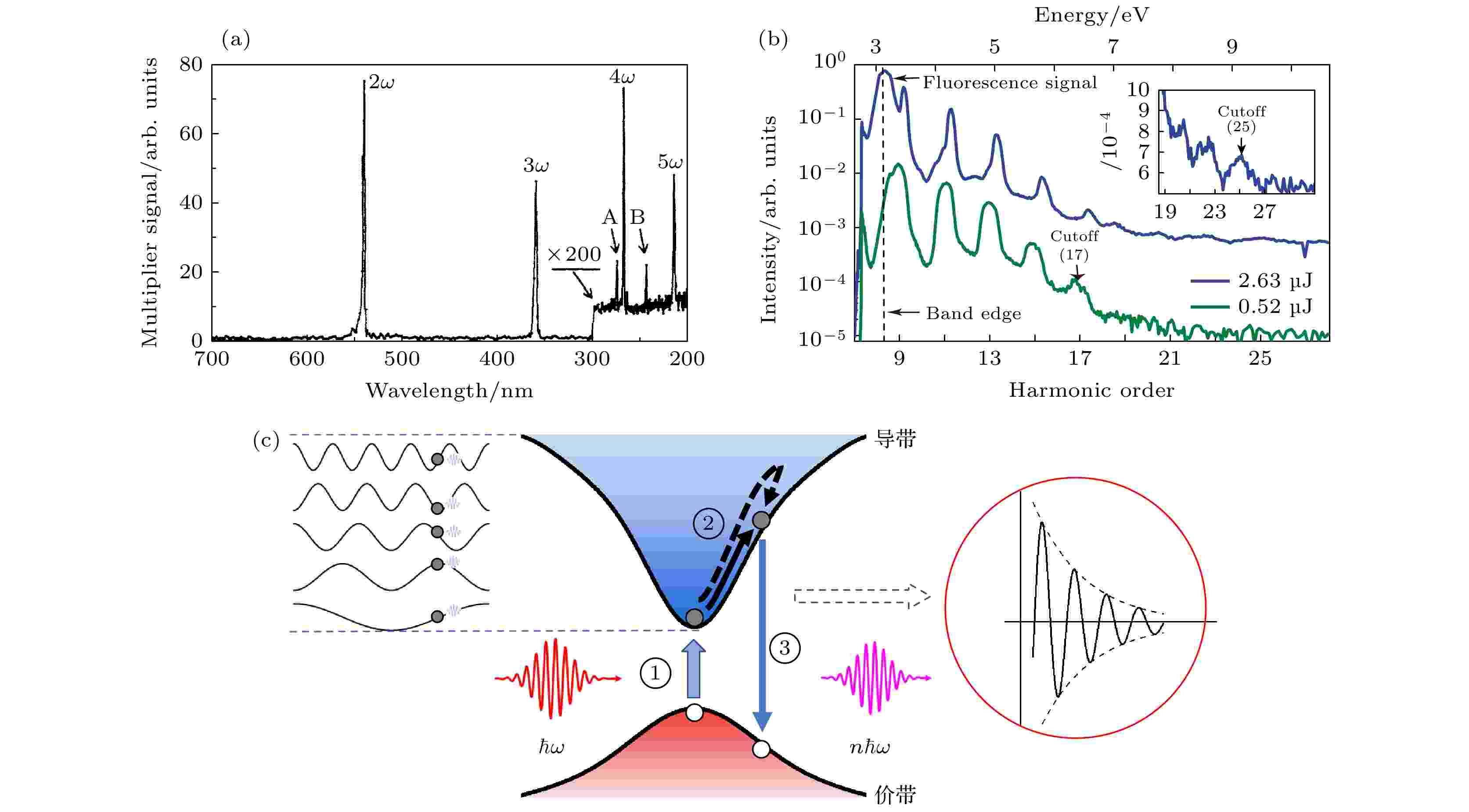
2022, 71 (23): 234205.
doi:10.7498/aps.71.20221319
Abstract +
The generation of high-order harmonics based on the interaction between ultrafast intense laser and matter provides a platform for studying the light-matter interaction in the non-perturbative region. It is also the main route to generating desktop extreme ultraviolet light source and attosecond pulse. The non-perturbative solid high-order harmonic involves the core content of ultrafast strong field physics, condensed matter physics, materials science, information science and other fields. Since it was first experimentally observed in 2011, it has rapidly become the research frontier of strong field physics and attosecond science. This review summarizes the research progress and important applications of solid high-order harmonics from the perspective of an experimentalist. Firstly, distinct characteristics are shown for solid high-order harmonic by comparing the dependence of harmonic yield and cut-off energy on driving laser parameters with gas high-order harmonic. Then, the progress of manipulation and application are highlighted for solid high-order harmonic, including the precise control of harmonic yield, polarization, space-time distribution through the design of target structure or laser field, as well as the application of solid high-order harmonic spectroscopy in the fields of material structure characterization and ultrafast electron dynamics. Finally, the future is prospected for the study of solid high-order harmonics.
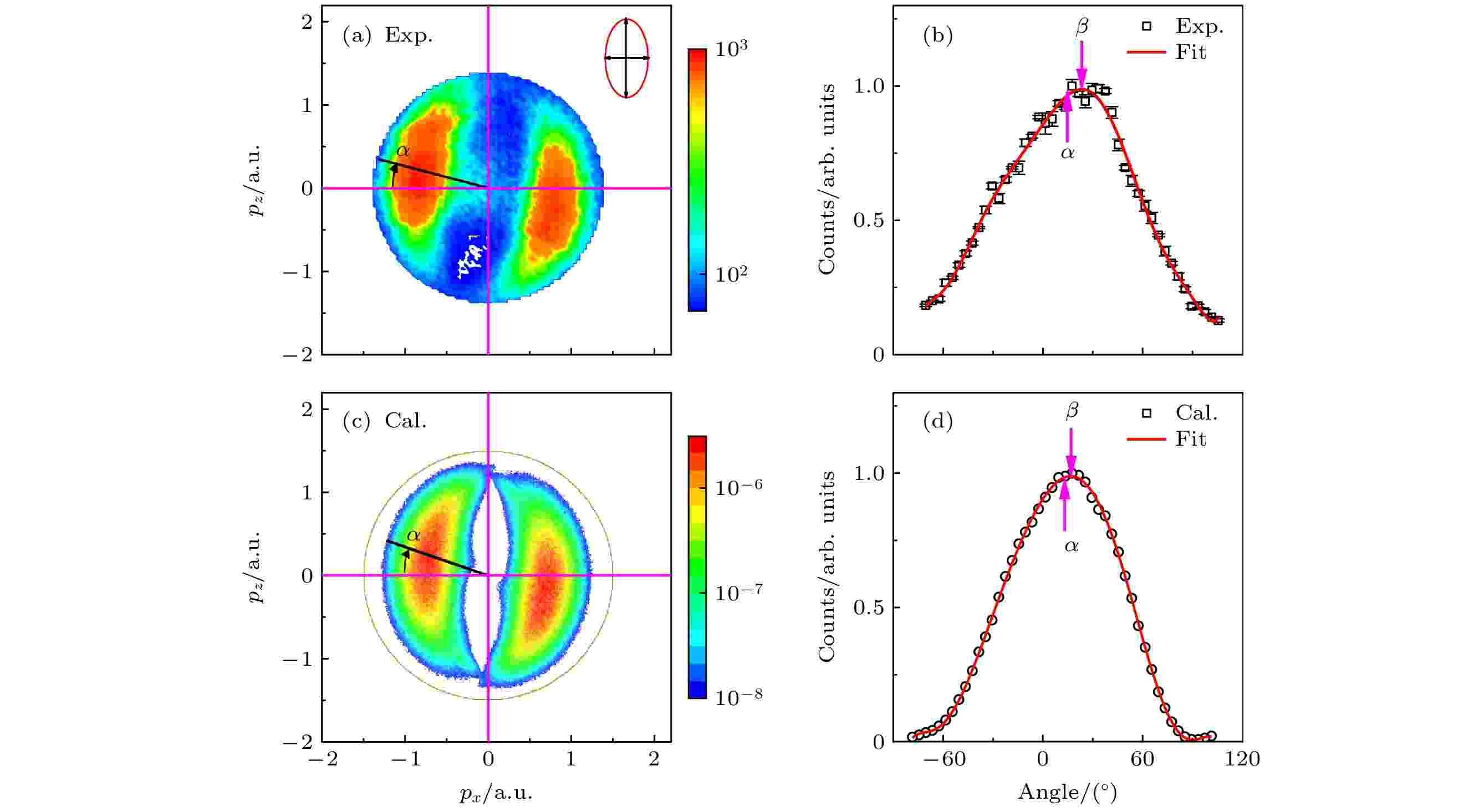
COVER ARTICLE
2022, 71 (23): 233203.
doi:10.7498/aps.71.20221295
Abstract +
“Attoclock” provides a promising experimental scheme to explore the timing of tunnel ionization of atoms and molecules in intense laser fields. In this work, we perform a systematical investigation of tunneling delay time in strong field ionization of atomic Ar, based on the “attoclock” experimental scheme. Experimentally, the laser intensity dependence of the photoelectron momentum distributions of Ar subject to strong elliptically polarized laser fields at 800 nm has been measured. Theoretically, a dedicated semiclassical model, in which the Coulomb potential effect, the nonadiabatic effect, the Stark effect, the multielectron screening and polarization effect have been well considered, is employed to simulate the ionization dynamics of Ar. By comparing the experimental and simulated results, an upper limit of 10 attoseconds for the tunneling delay time of Ar has been derived for the laser intensity ranges explored in this work. In addition, the influence of various physical effects on the extracted tunneling delay time, in the context of semiclassical model, has been analyzed. It is demonstrated that, under otherwise identical conditions, consideration of multielectron screening effect will give rise to the least change of the extracted tunneling delay time. In contrast, consideration of nonadiabatic effect will lead to the most significant change of the extracted tunneling delay time.
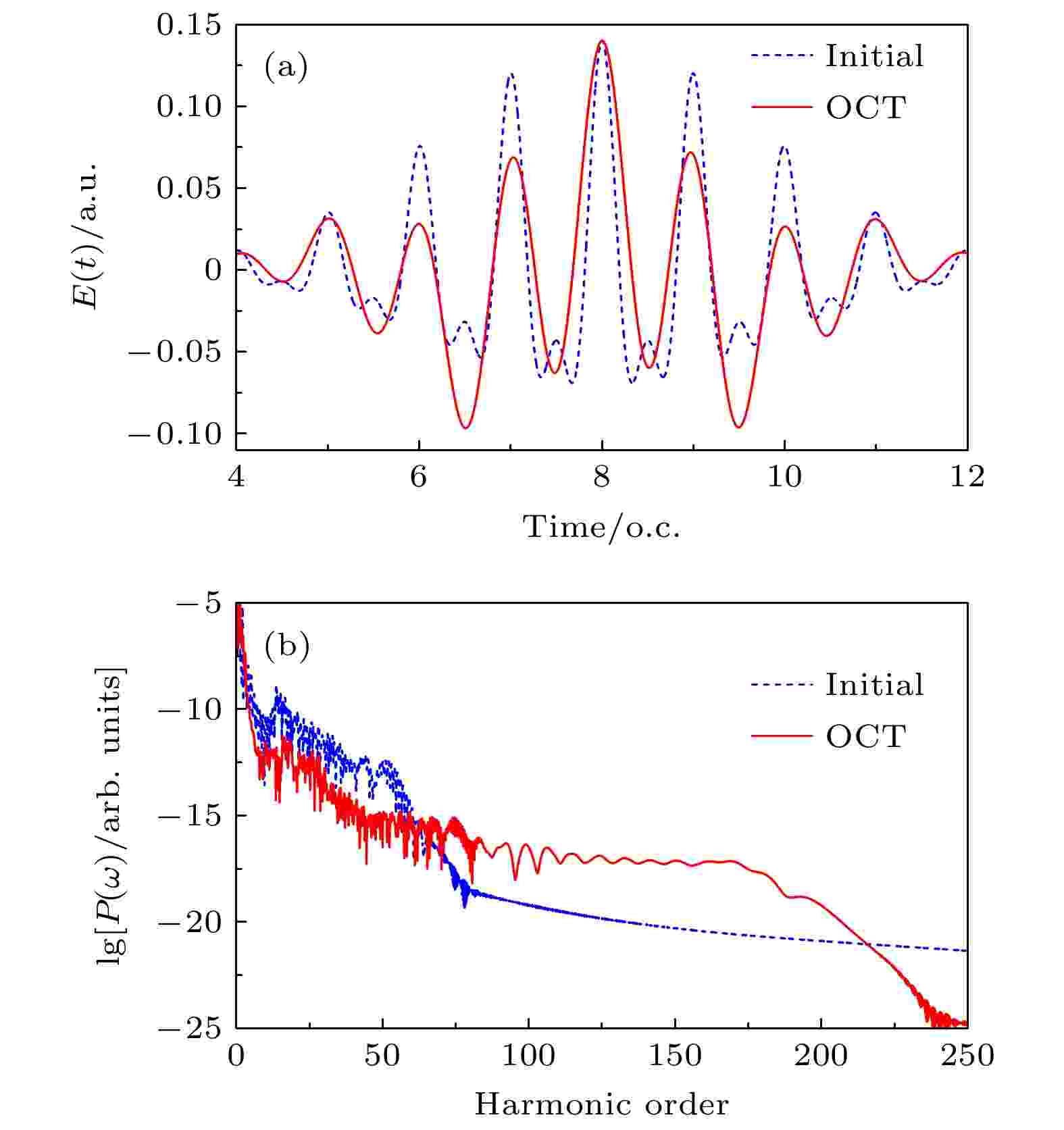
2022, 71 (23): 233204.
doi:10.7498/aps.71.20221298
Abstract +
High-order harmonic generation, which is a hot topic of strong ultrafast fields, is one of the most important ways for obtaining the ultraviolet attosecond sources, and has a very wide application prospect. This work focuses on the challenges of the generation of either short or high attosecond pulses. We present the research progress of the high-order harmonics and attosecond pulse generation, and propose an effective and feasible method, and show some results. Specifically, combining the time-dependent Schrödinger equation and new unconstrained optimization algorithm, the objective function with the aim of the widest supercontinuum plateau of He atom is designed and the optimized two-color and three-color laser fields are obtained. The supercontinuum spectra extend up to 100 harmonic orders for the case of the optimized two-color laser field. As a result, a single ultrashort attosecond pulse of 25 as is produced. For the three-color case, the supercontinuum spectra reach up to 170 harmonic orders, and the width of single shortest attosecond pulse obtained by superposing pulses from low order (110 order) to high order (280 order) is obtained to be 17 as . Taking the optimized two-color laser field for example, the macroscopic medium propagation is discussed by solving the Maxwell equation. The results show that the selectivity of quantum trajectories from far-field space distribution can obtain the single ultra-short attosecond pulse.
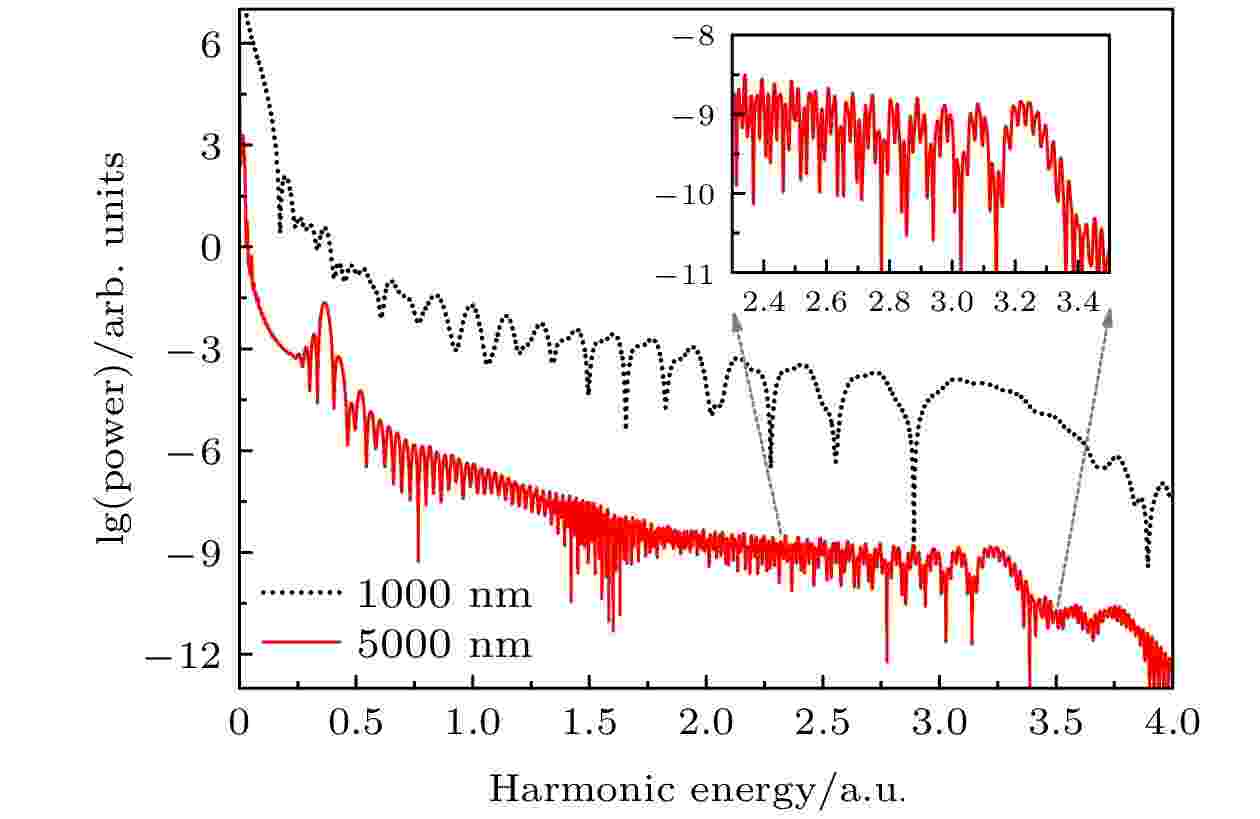
2022, 71 (23): 233205.
doi:10.7498/aps.71.20220743
Abstract +
With the numerical solution of the time-dependent Schrodinger equation, we theoretically investigate the high-order harmonic emissions generated by the atoms irradiated by the ultrashort lasers with different wavelengths but the same pondermotive energy. As the driving-laser wavelength increases, the intensity of the high-harmonic emission decreases. Comparing with the harmonic spectra of atoms driven by a 1000-nm-wavelength laser pulse, a new peak structure appears in the spectra of atoms driven by a 5000-nm-wavelength laser wavelength. It is shown by the time-frequency analysis of the harmonic emission, the time-dependent evolution of the electron density, and the time-dependent population analysis of the eigenstate, that the physical mechanism behind the new peak appearing in the harmonic spectra is the interference between the harmonic emission generated by the electrons ionized out of the excited atoms returning to the parent ions and the harmonic emissions resulting from the ground state ionization.
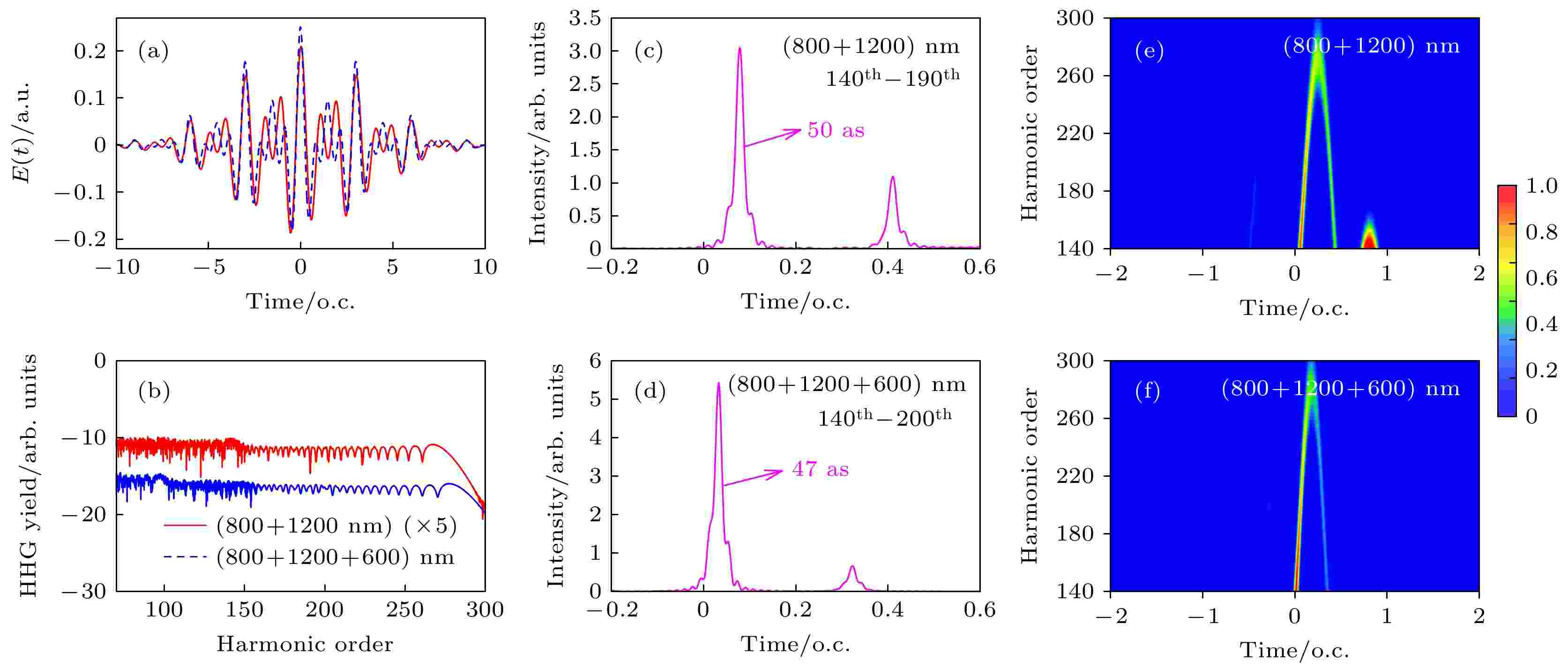
2022, 71 (23): 233207.
doi:10.7498/aps.71.20221375
Abstract +
With the rapid development of laser technology, it is possible to control optical waveforms by coherent superposition of electric fields with multiple color components, which creates conditions for generating the ultra-short isolated attosecond pulses (IAP). Based on the strong-field approximation theory, this work focuses on the IAP generated by the optimized multicolor field synthesized by two fundamental near-infrared lasers and their second harmonic fields. The results show that by applying frequency-doubled pulses to the near-infrared laser fields and optimizing the laser parameters, the emission properties of high order harmonics from single atom can be greatly improved, and the nearly attochirp-free harmonic emission can be realized within a certain energy range. As a result, shorter IAPs are obtained. With the consideration of the macroscopic propagation effect of gas, the IAP with a pulse width up to 40 as is generated under appropriate experimental conditions. Finally, the effects of gas pressure on the properties of the high-order harmonic and attosecond pulses are also investigated. This study provides useful theoretical guidance for generating ultra-short IAPs with near-infrared laser pulses in experiment.
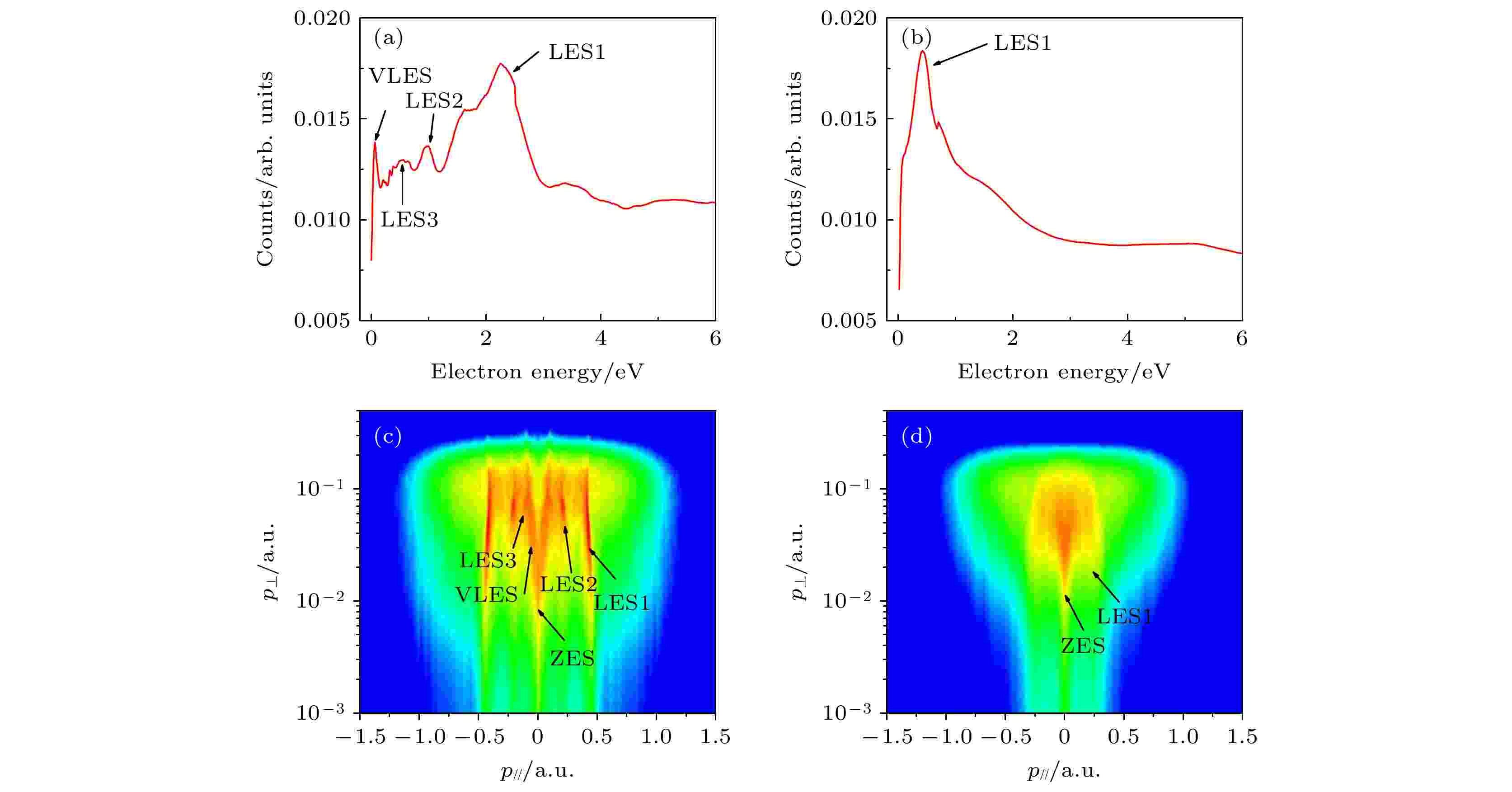
2022, 71 (23): 233208.
doi:10.7498/aps.71.20221609
Abstract +
The low-energy structure (LES) of above-threshold ionization (ATI) of atoms subjected to an intense laser field is a hot topic in the strong-field atomic physics. The rich physical insights behind LES attract a lot of attention. Based on a semi-classical model, a semi-classical two-step (SCTS) quantum trajectory model and numerical solution of the time-dependent Schrödinger equation (TDSE), we study the pulse-duration dependence of LES for Xe atom subjected to a mid-infrared laser field. It is found that the energy of LES becomes lower for shorter pulse duration. Further analysis shows that in the case of multi-cycle laser field, the LESn structure is closely related to the number of times of forward scattering and the initial transverse momentum. In the case of few-cycle laser pulse, the carrier-envelope phase (CEP) dependence of the peak position of LES is mainly due to the CEP dependence of the influence of both vector-potential of the laser field and the Coulomb potential. In addition, the bunching effect of electrons, caused by Coulomb potential, is the main reason for the formation of LES.
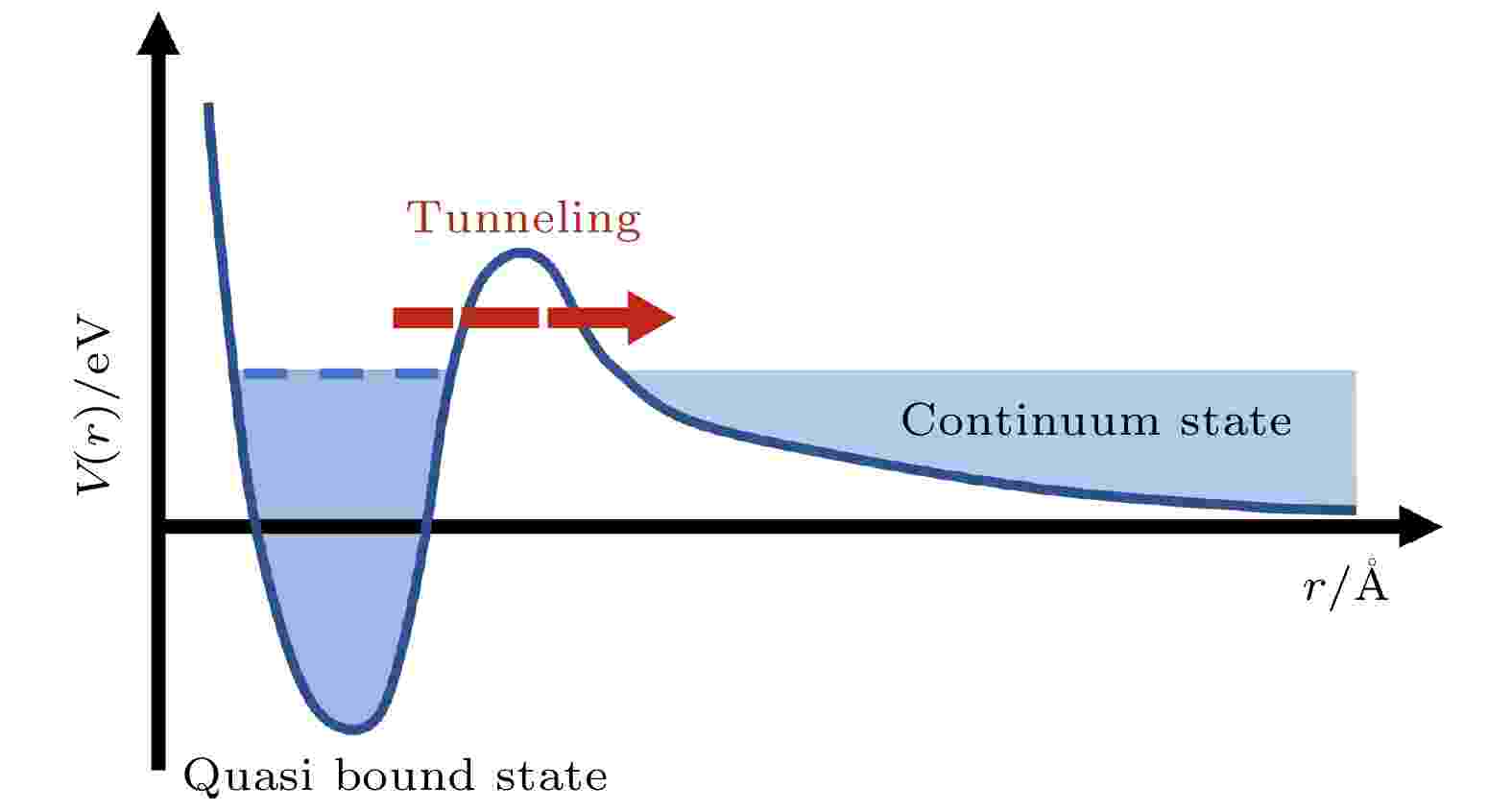
2022, 71 (23): 233301.
doi:10.7498/aps.71.20221735
Abstract +
Shape resonance is an important and ubiquitous phenomenon in the process of molecular scattering and photoionization. The study of the attosecond photoemission time delay in the vicinity of the shape resonance is of great significance for understanding its intrinsic origin on a nature time scale of electron motion. In this paper, an advanced attosecond coincidence interferometer consisting of a near-infrared femtosecond light source and an extreme ultraviolet attosecond pulse train is used to study the shape resonance process of the 4σ electron of nitric oxide molecules via reconstructing attosecond harmonic beating by measuring the interference of two-photon transitions (RABBIT). The energy dependent effective ionization time delay in the vicinity of the resonance energy region is reported. By comparing the relationship between the two-photon transition delay and the one-photon transition delay, it is found that the Wigner delay of the single-photon process is the main reason for the two-photon transition delay changing with energy. The effect of continuum-continuum delay is further explored. Theoretical calculations of the initial state (bound state) and final state (resonance state) electron wave function orbits of the resonance show that the shape resonance assisted time delay is dominated by the electrons trapped in the centrifugal potential barrier.

2022, 71 (23): 234204.
doi:10.7498/aps.71.20221714
Abstract +
Compared with nonpolar molecules, owing to the inherent asymmetry, polar molecules exhibit rich and very complex electronic dynamics under the interaction with strong laser fields. In this work, high-order harmonic generation (HHG) of polar molecules CO is investigated by using the three-dimensional time-dependent Hartree-Fock (3D-TDHF) theory, with all electrons active. Through the high harmonic spectra and time-frequency analyses, it is found that when the laser field polarizes along the molecular axis, the ionized electrons from the two sides (C side and O side) contribute differently to the harmonic radiation. On the one hand, the harmonic intensity from the C side is greater than that from the O side, which is caused by the ionization rate. On the other hand, for the lower-order (7th–17thorder) harmonics of plateau region, only the electrons from the C side participate in the HHG. However, for its higher part (18th–36thorder), the electrons from both C side and O side contribute to high harmonics simultaneously. Moreover, the difference between contributions from two sides is related to the alignment angleθbetween the laser polarization and the molecular axis, and it reaches a maximum value aroundθ= 0º and a minimum value aroundθ= 90º. There are two strong resonances around harmonic order H12.6 (19.5 eV) and H18 (27.9 eV) in the harmonic spectra whenθ= 0º. The first resonance around H12.6 reveals that part of electrons ionized from the C side recombine to the vicinity of the further O nucleus. Near the second resonance around H18, there appears a shape resonance. Nevertheless, the shape resonances from the C and O sides are disparate. Based on the strong-field approximation theory, the ratio between photoionization cross sections from C and O sides around the shape resonance is calculated. The ratio is about 5.5 from 3D-TDHF, which is greater than the result of 3 simulated by ePloyScat, where only HOMO is considered. This discrepancy reveals that multi-electron effects enhance the asymmetry of polar molecules. This work provides an in-depth insight into the asymmetry in HHG of polar molecules, which benefits the generation of isolated attosecond pulse . It also promotes the application of high harmonic spectra in tracking the ultrafast dynamics of electrons.
REVIEW
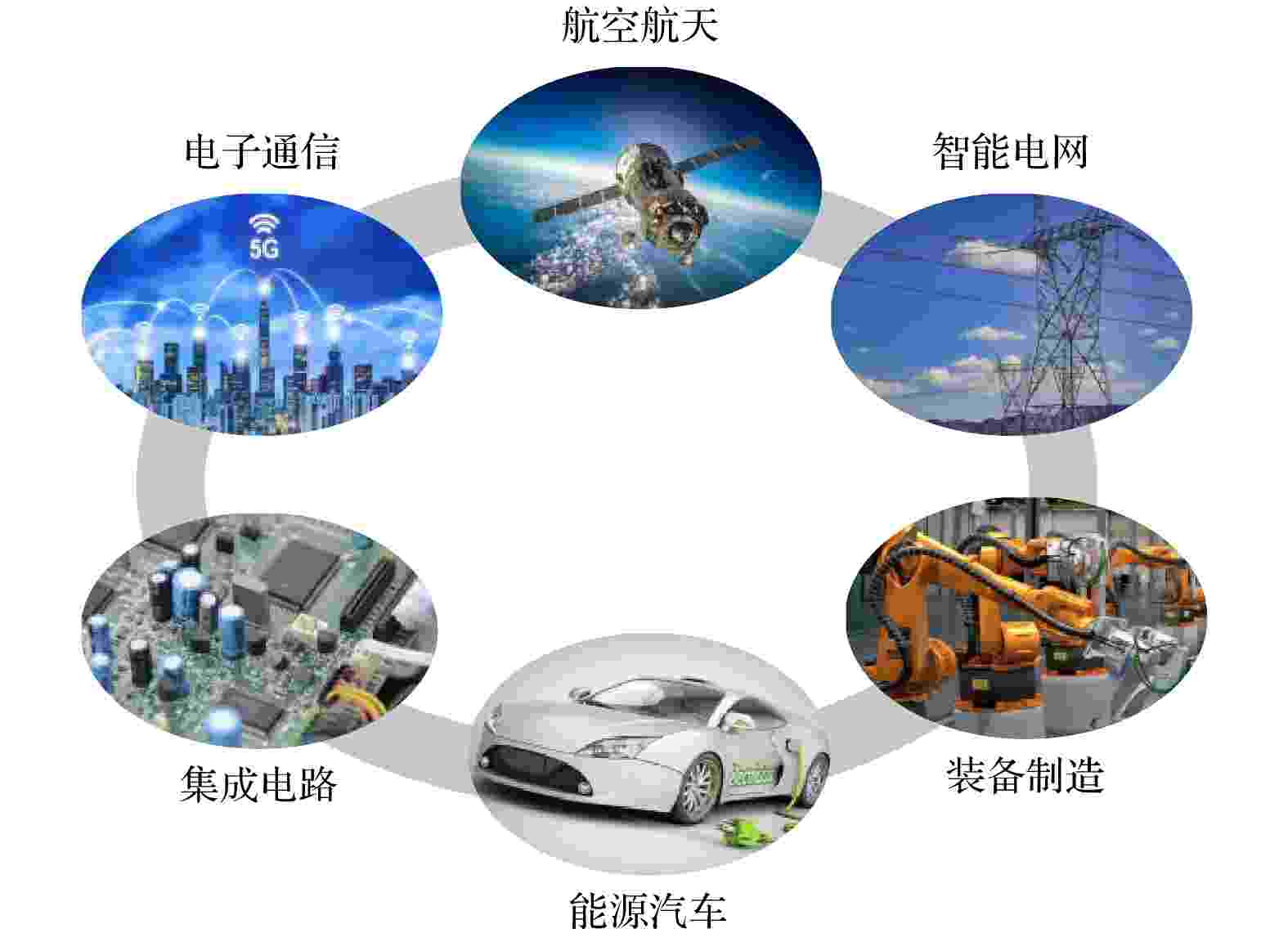
EDITOR'S SUGGESTION
2022, 71 (23): 233601.
doi:10.7498/aps.71.20221398
Abstract +
In the era of highly thin, multi-functional and integrated electronic devices, it will inevitably lead to the heat accumulation inside the composite material, thereby seriously affecting the operation stability and service life of the equipment. How to realize the rapid and efficient heat conduction and heat dissipation of dielectric materials has become a bottleneck problem restricting the further development of electronic devices. The intrinsic thermal conductivity of traditional polyimide is low, which limits its application in electrical equipment, smart grid and other fields. The development of new high thermal conductivity polyimide dielectric film materials has become the focus of research. This paper introduces the thermal conduction mechanism of composite materials, summarizes the research progress and development status of thermally conductive polyimide films in recent years, and focuses on the effects of thermally conductive fillers, interface compatibility, and molding process of the thermal conductivity of materials. Finally, some key scientific and technical issues in the research are summarized and prospected in combination with the future development needs of thermally conductive polyimide composite dielectric materials.
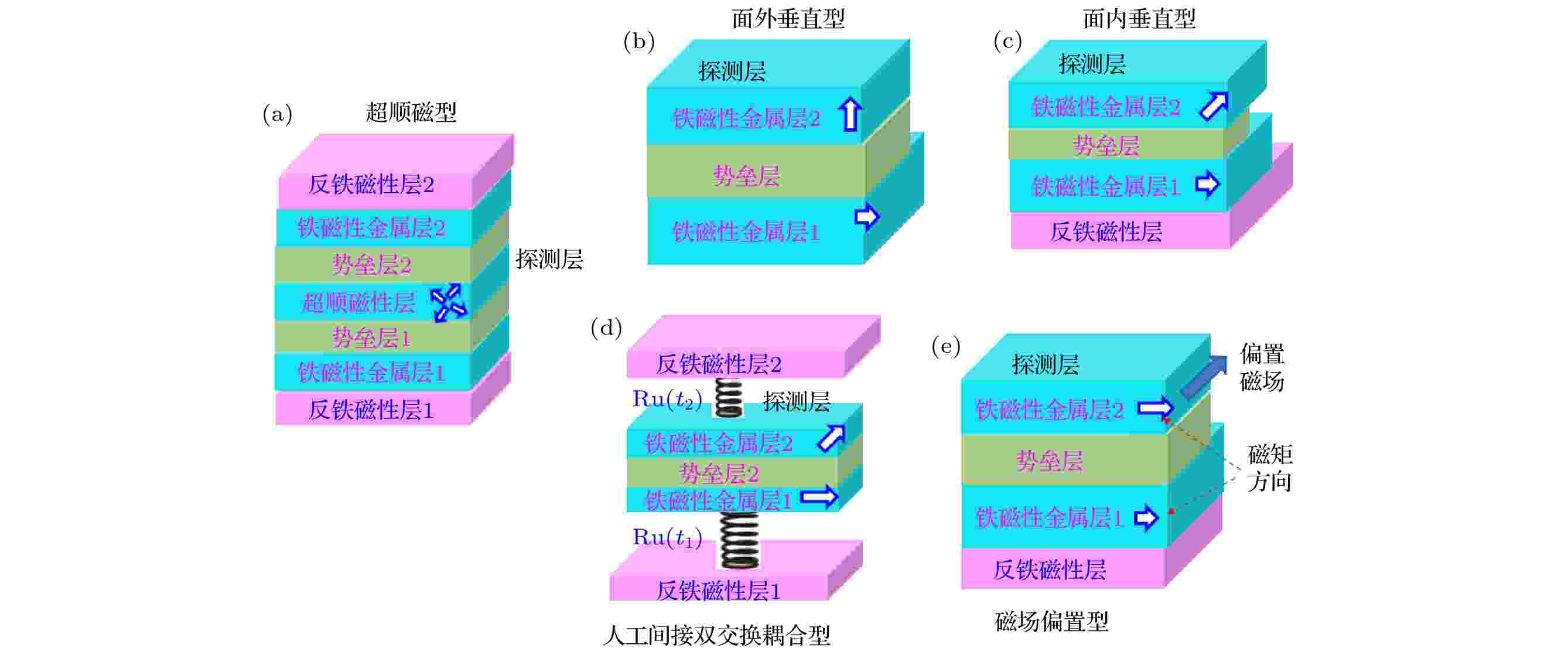
EDITOR'S SUGGESTION
2022, 71 (23): 238502.
doi:10.7498/aps.71.20221278
Abstract +
Magnetic tunnel junction (MTJ) has been successfully used in spintronic devices, such as magnetoresistive random access memory, tunneling magnetoresistance (TMR) sensor, magnetic logic. In the TMR sensor a special magnetic structure is used between the free layer and the pinned layer of an MTJ to realize a linear output. So far, five types of TMR linear sensing units (TMR-LSNs) have been developed based on MgO MTJs, which are artificial-indirect-double-exchange-coupling-, magnetic-field-biased-, in-plane-, perpendicular-, and superparamagnetic-TMR-LSN, respectively. In this paper, the five types of TMR-LSNs are combed and their magnetic sensing performances are systematically compared with each other. First, the five types of TMR-LSNs each have a linear resistance response to the external magnetic field with a changeable sensitivity, a linear field range and a low frequency noise level. Second, in the five types of TMR-LSNs different magnetic structures are used to realize the same aim that is to obtain the optimized performance parameters, which is of significance for putting TMR sensors into practical applications. Third, the five types of TMR-LSNs are suitable for different application scenarios due to their respective performance parameters. Therefore, we believe that our summarized discussion in this paper will help people to explore and find the relevant applications of TMR sensors based on the five types of TMR-LSNs.
GENERAL

2022, 71 (23): 230501.
doi:10.7498/aps.71.20221525
Abstract +
There is heterogeneity among different neurons, and the activities of neurons are greatly different, so the coupling between heterogeneous neurons can show richer dynamic phenomena, which is of great significance in understanding the neural function of the human brain. Unfortunately, in many studies of memristive coupled neurons, researchers have considered two adjacent identical neurons, but ignored the heterogeneous neurons. In this paper, two models are chosen, i.e. a Hindmarsh-Rose neuron model and a Hopfield neuron model, which are very different from each other. The proposed fractional-order linear memristor and fractional-order hyperbolic memristor simulated neural synapses are introduced into the two heterogeneous neuron models, considering not only the coupling between the two neurons, but also the coupling between single neurons. The self-coupling of neurons, a five-dimensional fractional memristive coupled heterogeneous neuron model, is established. In the numerical simulation of the new neuron model, the phase diagrams, bifurcation diagrams, Lyapunov exponent diagrams, and attraction basins are used to demonstrate the changes in coupling strength and other parameters in the memristive coupled heterogeneous neuron model, the new neuron model performance coexistence of different attractors. On the other hand, by changing the initial state of the system while keeping the relevant parameters of the system unchanged, the multistable phenomenon of the coupled heterogeneous neuron model can be observed. Using the phase diagram, the coexistence of different periods, and the phenomenon of period and chaos can be clearly observed. The coexistence of different attractor states can also be observed in the attractor basin. This has many potential implications for studying dynamic memory and information processing in neurons. Uncovering different types of multistable states from a dynamical perspective can provide an insight into the role of multistable states in brain information processing and cognitive function. Finally, the neuron model is implemented based on the micro control unit of the advanced RISC machine, and the phase diagram is observed under some parameters of the coupled neuron model on an oscilloscope. The experimental results show the validity of the theoretical analysis.
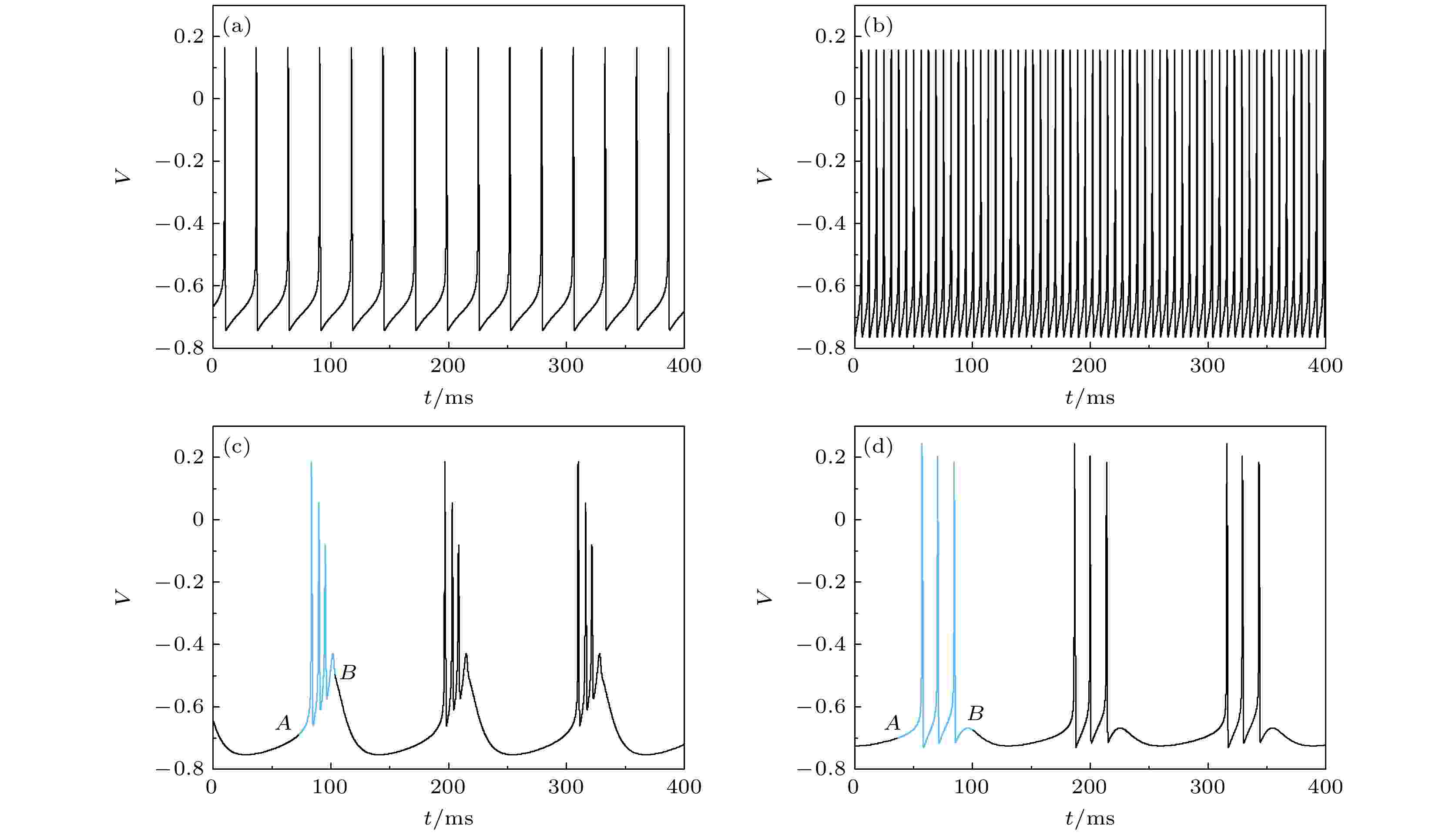
2022, 71 (23): 230502.
doi:10.7498/aps.71.20221416
Abstract +
The neocortex of the brain plays a most important role in achieving functions of the brain via the electrical activities of neurons. Understanding the transition regularity of firing patterns and underlying dynamics of firing patterns of neurons can help to identify the brain functions and to treat some brain diseases. Different neocortical neurons exhibit regular spiking (RS), fast spiking (FS), intrinsic bursting (IB), and continuous bursting (CB), which play vital roles and wide range of functions. Fast-slow variable dissection method combined with bifurcation analysis has been an effective method to identify the underlying dynamical mechanism of spiking and bursting modulated by a single slow variable. The spiking is related to the stable limit cycle of the fast subsystem, and the bursting is associated with the transitions or bifurcations between the stable limit cycle and resting state of the fast subsystem. Such underlying dynamics of bursting has been widely used to distinguish different bursting patterns and identify complex dynamics of bursting modulated by various different factors such as synaptic current, autaptic current, and stimulations applied at a suitable phase related to the bifurcations, which play important roles in the real nervous system to regulate neural firing behaviors. Unfortunately, the bursting of neocortical neuronal model (wilson model) is modulated by two slow variables, i.e. the gating variable of calcium-activated potassium channelHand the gating variable of T-type calcium channelT,withHbeing slower thanT. Then, the underlying dynamical mechanism of the IB and CB of the neocortical neurons cannot be acquired by the fast-slow variable dissection method whenHis taken as the sole slow variable, due to the fact that the fast-subsystem contains the slow variableT. In the present paper, we use the fast-slow variable dissection method with two slow variables (HandT) to analyze the bursting patterns. The bifurcations of the fast subsystem, and the intersections between the bifurcation curves and the phase trajectory of bursting in the parameter plane (H,T) are acquired. Owing to the fact that neither of the two slow variables of the bursting is sufficiently slow, the bifurcations of only some intersections are related to the bursting behaviors, but others not. Then, the position relationship between the bifurcation curves and bursting trajectory in the three-dimensional space (H,T,V) (Vis membrane potential of bursting) is further acquired, from which the bifurcations related to bursting behaviors are acquired and bifurcations unrelated to bursting behaviors are excluded. The start phase and the termination phase of the burst of the IB are related to the saddle-node on invariant circle (SNIC) bifurcation, but not to the saddle-node (SN) bifurcation. The start phase and termination phase of the burst of the CB are related to the SNIC bifurcation and the supercritical Andronov-Hopf (SupHopf) bifurcation, respectively, but not to the SN bifurcation. The results present a comprehensive and in-depth understanding of the underlying dynamics of bursting patterns in the neocortical neurons, thereby laying the foundation for regulating the firing patterns of the neocortical neurons.
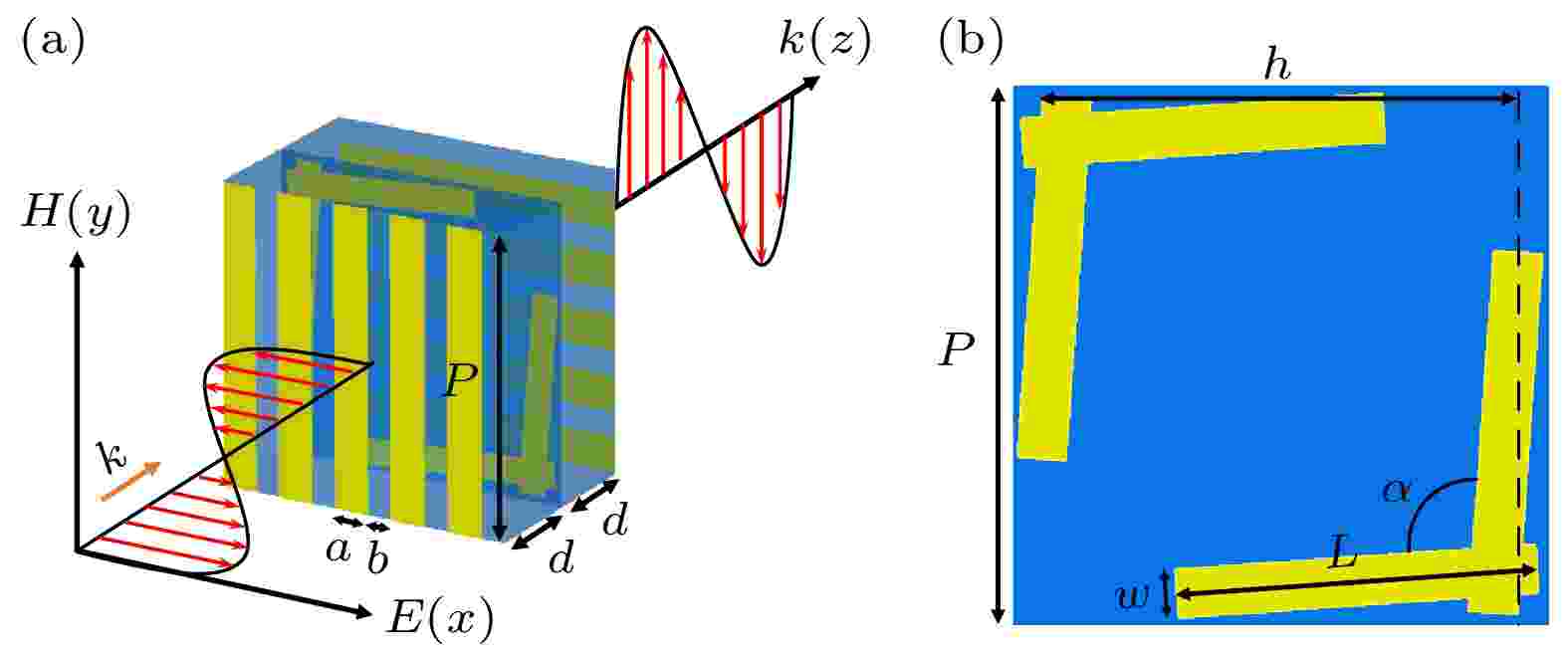
2022, 71 (23): 230701.
doi:10.7498/aps.71.20221259
Abstract +
Metasurfaces have attracted extensive attention due to their powerful functions, especially the manipulation of the polarization state of electromagnetic wave in many different areas, which have aroused a lot of research interest. In this work, a broadband transmission polarization converter based on V-shaped element array in terahertz band is designed and analyzed, which consists of grating-V-shaped metasurface-grating. The top layer and bottom layer form a pair of crossed gratings, and the middle layer is a V-shaped metasurface, and the layers are separated by polyimide. The structure parameters of the polarization converter are optimized by CST microwave studio, changes of which can result in narrow band or low transmission. Cross-polarization transmission rate and polarization conversion rate can reach more than 80% and 99%, respectively, in a frequency range from 0.35 THz to 1.11 THz. By studying the electric field distribution in the substrate under the V-shaped metasurface , it is found that the real part of the cross-polarization electric field between adjacent V-shaped metasurfaces presents similar values in a frequency range from 0.35 THz to 1.11 THz, resulting in high cross-polarization transmission. However, the real part of the cross-polarization electric field between adjacent V-shaped metasurfaces presents opposite values, resulting in low cross-polarization transmission at 1.40 THz. At the same time, the responses of the single layer structure of the V-shaped array and the bi-layer structure of the grating placed behind the V-shaped array to vertically incident x-polarized terahertz waves are investigated respectively, and the results show that the single-layer V-shaped array can convert part of linearly polarized incident light into cross-polarization light, however, in the bi-layer structure, Fabry-Perot cavity is formed between the V-shaped array and the grating, and the cross polarization transmission increases. This indicates that the V-shaped array provides the capability of polarization conversion, and the existence of the grating makes the F-P cavity inside the structure create the conditions for the back and forth reflection of terahertz waves. The combined action of the V-shaped metasurface and orthogonal grating results in a high polarization conversion rate.

2022, 71 (23): 230702.
doi:10.7498/aps.71.20221460
Abstract +
In a high-precision optical fiber time transfer system, in order to solve the scientific problem of time transfer dispersion deviation caused by the inconsistency of the two-way laser wavelengths, a high-precision time transfer method based on laser wavelength tracking is proposed in this paper. In the two-way time comparison, the laser emitted by the local site is used as a reference, and other lasers in the system track the reference, and the difference between the two-way laser wavelengths is small enough and stable for a long time, thereby greatly reducing the time transfer deviation caused by the inconsistency of the two-way laser wavelengths. In order to verify the performance of laser wavelength tracking, a double-layer temperature controlled externally modulated laser is designed, an experimental device for automatic laser wavelength tracking is designed, and laser wavelength tracking experimental modules are developed. The results show that the standard deviation of wavelength jitter is 55 fm, and the long-term relative stability of laser wavelength tracking is better than 5 fm@1×104s, which ensures that the two laser wavelengths can remain relatively stable for a long time. In the case of long-distance fiber time transfer, by optimizing the setting value of the wavelength difference between each laser and the reference light on the link, the dispersion deviation of time transfer can be further reduced. In order to verify the feasibility of the high-precision optical fiber time transfer method based on laser wavelength tracking, a long-distance multi-station optical fiber time transfer experimental setup is built in our laboratory. The experiment is carried out in the laboratory by using 0.005, 250, 500, 750 km optical fiber links. The experimental results obtained on 750 km link show that the time transfer deviation is better than 5 ps, the stability is 4.7 ps@1 s, 0.4 ps@4×104s, and the uncertainty is 8.4 ps. In the engineering application of optical fiber time transfer, by optimizing the working sequence of the system, the holding time length of the remote site clock can be reduced, and the accuracy of optical fiber time transfer can be further improved, which lays a foundation for realizing high-precision long-haul optical fiber time transfer.
NUCLEAR PHYSICS
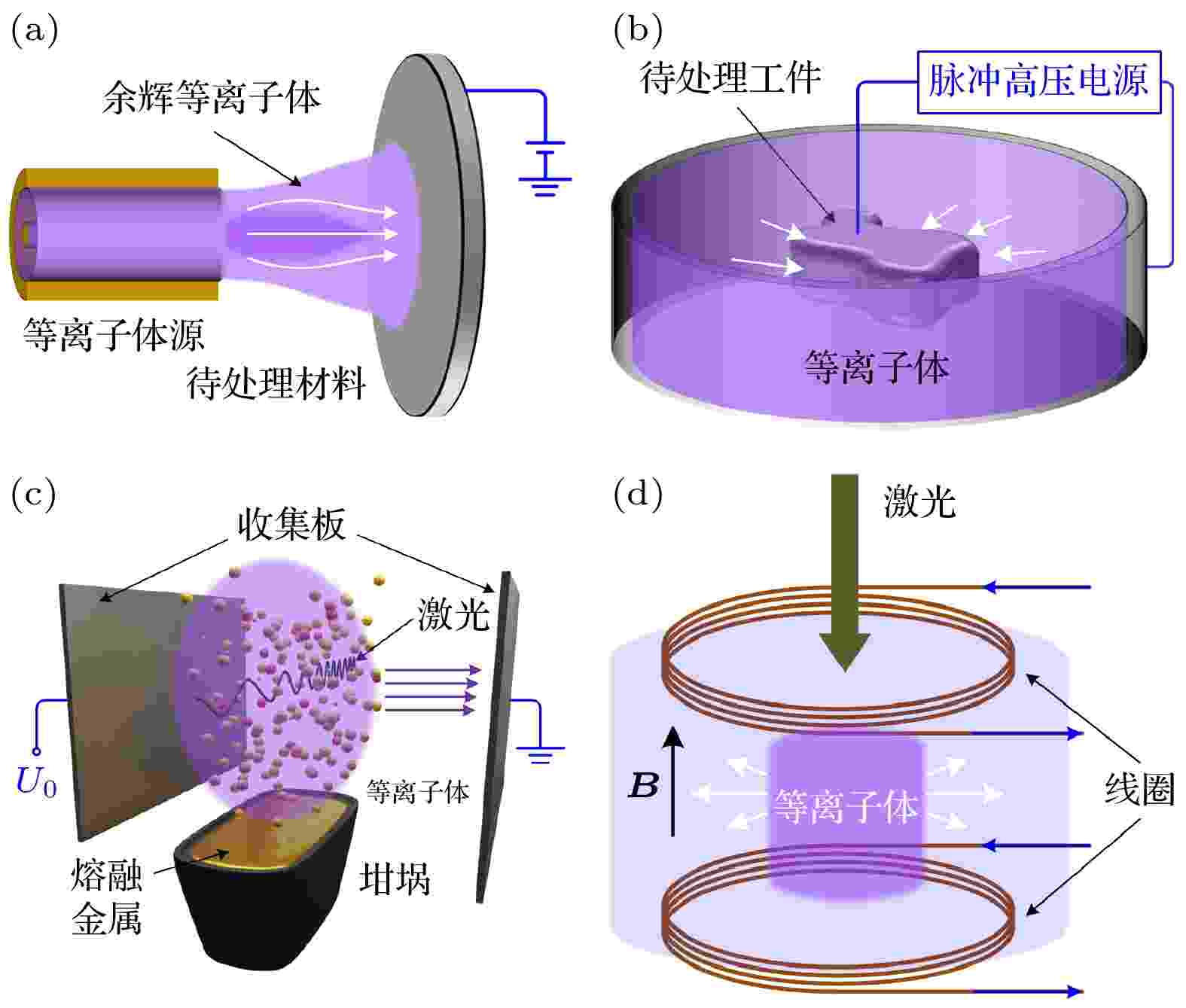
EDITOR'S SUGGESTION
2022, 71 (23): 232801.
doi:10.7498/aps.71.20221431
Abstract +
In this work, non-equilibrium transport processes of the charged particles in a plasma confined between two parallel plates with externally applied electric fields are analyzed with the charged-particle transport of laser-induced plasma as the major research background. The theoretical analyses of the transient responses of the electrons to the externally applied electrostatic fields are conducted under different initial distributions of the plasma parameters including the loss and the oscillation frequency of the electrons in the transient oscillation process, and the critical value of the electron number density for the initial electron temperature effect of the ion transport. The particle-in-cell (PIC) modeling results are consistent well with the theoretical predictions. Based on the preceding results, the PIC simulations of the ion extraction process by imposing a radio-frequency (RF) electric field on the electrostatic field are conducted. The modeling results indicate that there exists an obvious resonance phenomenon in the ion extraction process, in which the ion extraction flux is significantly increased. Under a certain operating condition, the ion extraction time at the RF resonance point is reduced to 5.8% of its original value with only an electrostatic field. Further analysis shows that, on the one hand, the electrons will be heated by the externally applied RF electric field, and thus, the propagation velocity of the ion rarefaction wave will be increased; on the other hand, the electron oscillations will be enhanced, resulting in losing more electrons in the electron oscillation process and a higher plasma potential, which ultimately leads to a higher ion extraction flux and a shorter ion extraction time.
GEOPHYSICS, ASTRONOMY, AND ASTROPHYSICS
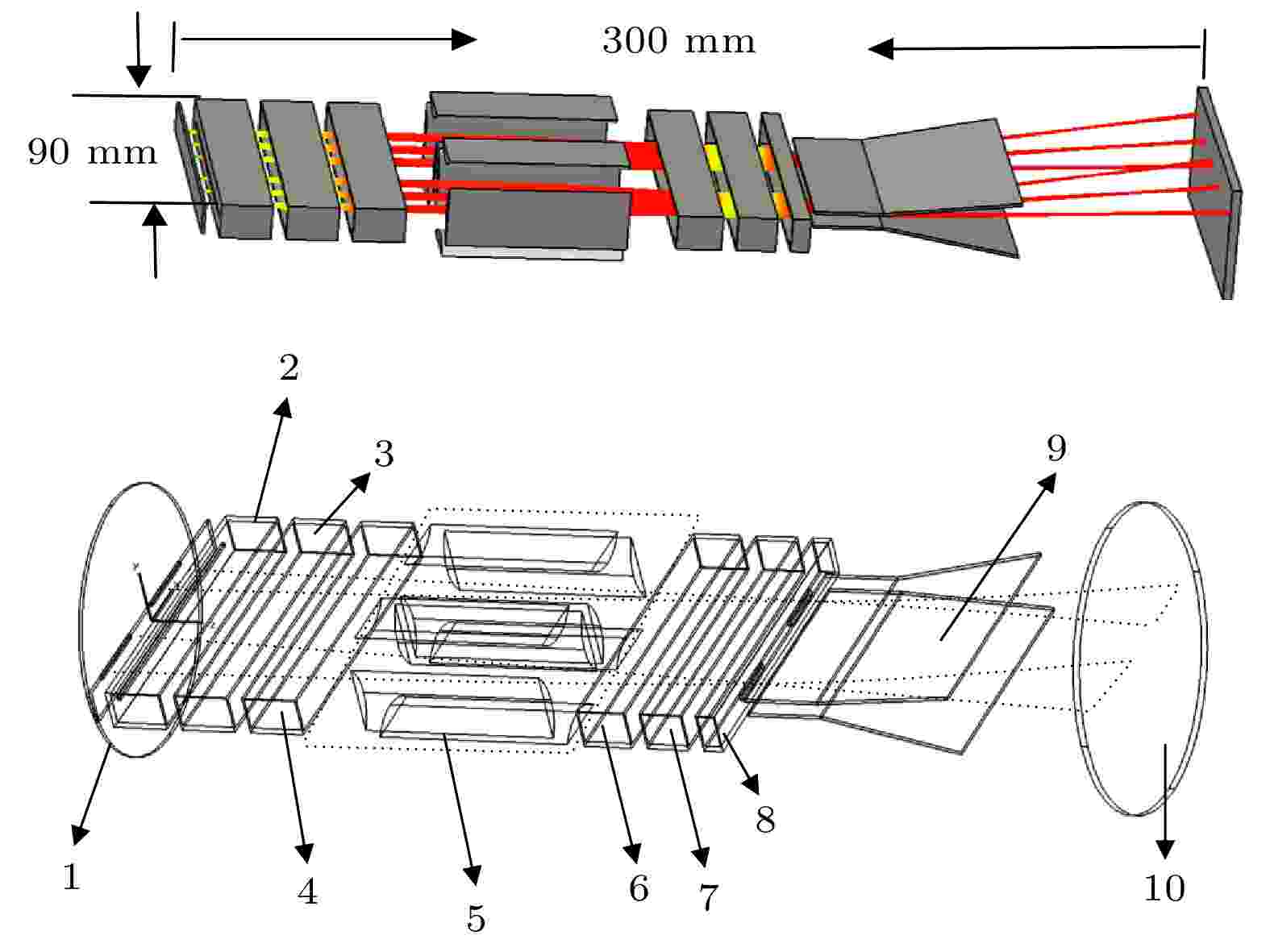
2022, 71 (23): 233201.
doi:10.7498/aps.71.20221194
Abstract +
ELECTROMAGNETISM, OPTICS, ACOUSTICS, HEAT TRANSFER, CLASSICAL MECHANICS, AND FLUID DYNAMICS

2022, 71 (23): 234101.
doi:10.7498/aps.71.20221156
Abstract +
When the electromagnetic field in the sapphire resonator corresponds to the whispering gallery mode, it exhibits an extremely low dielectric loss. As result, sapphire oscillator has the characteristics of ultra-low phase noise and high short-term frequency stability. The distribution of electromagnetic field in the sapphire resonator is very important for realizing high-level oscillator. In this work, the radial-axial mode matching method is used to theoretically analyze the distribution of the field mode in the sapphire resonator, and the resonant frequency of the WGHm,0,0mode is calculated. The field distribution of the sapphire resonator is simulated by the finite element analysis method. The gallery mode number of the sapphire resonator is studied and the electromagnetic field intensity distribution of the WGH15,0,0mode in the azimuthal, axial and radial direction are obtained. Finally, a home-made gallery mode analyzer is used to measure the microwave field on the surface of sapphire resonator, which is composed of a three-dimensional rotating stage , the magnetic ring/probe coupling and a vector network analyzer. With the above theoretical analysis, the finite element analysis method and the experimental measurement, the working mode of the sapphire resonator and the resonant frequency of the WGHm,0,0mode are determined. When the sapphire resonator works in WGH15,0,0mode, the resonant frequency is 9.891 GHz, and the parameters of the whispering gallery mode in the resonator are obtained, and the unloadedQvalue of the resonator is 94000. When the temperature is 292 K, the frequency-temperature sensitivity of the sapphire resonator working in the WGHm,0,0whispering gallery mode is about
$71.64 \times 10^{-6}$
. The microwave oscillator consisting of the highQsapphire resonator can be used to make an oscillator with ultra-low phase noise and high frequency stability.
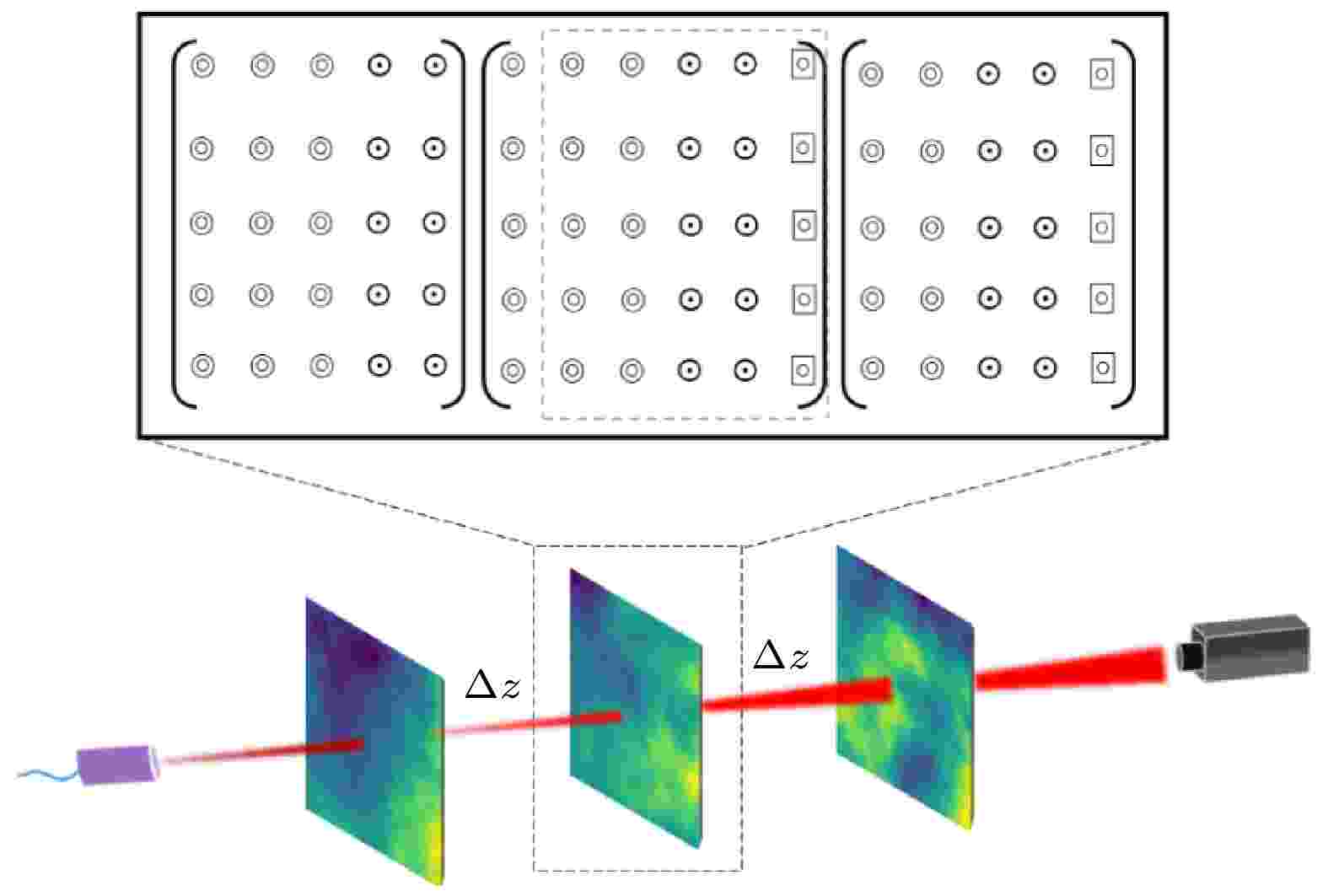
2022, 71 (23): 234201.
doi:10.7498/aps.71.20221202
Abstract +
In the process of laser propagation in atmosphere, its coherence characteristics are reduced by turbulence, which further affects the efficiency and performance of coherent detection process. In this paper, atmospheric coherence time is defined to describe the fluctuation speed of laser field after atmospheric transmission. The relative size of atmospheric coherence time and coherence process duration time determines the performance of coherent detection process. According to the infinitely long phase screen technology, we simulate laser atmospheric transmission, and systematically study the influences of atmospheric parameters, transceiver parameters and wavelength on atmospheric coherence time. It is found that the atmospheric coherence time is positively correlated with wavelength, receiving aperture and atmospheric coherence length, and inversely proportional to wind speed, which shows that the atmospheric coherence time can be effectively improved by improving the optical design and changing the laser band, thus effectively reducing the disturbance caused by turbulence and improving the stability of the received light field. The atmospheric coherence time defined in this paper is an important parameter to measure the influence of turbulence on coherent detection. This study can provide a powerful reference for evaluating the influence of atmosphere on coherent detection process.
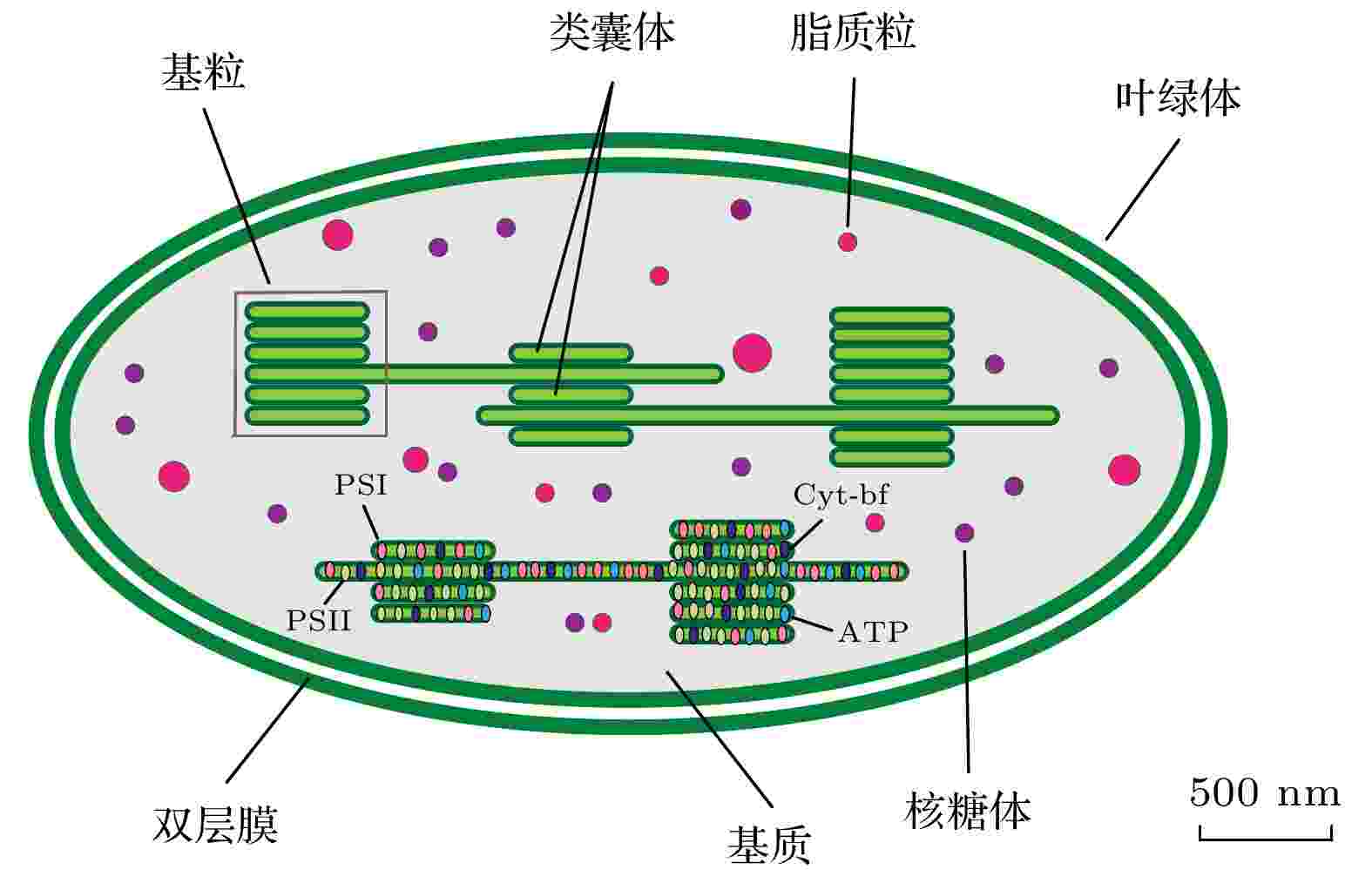
2022, 71 (23): 234202.
doi:10.7498/aps.71.20221412
Abstract +
The ultra efficiency of energy transfer in photosynthesis has important biological significance. The underlying mechanism of energy transfer has never stopped being explored. Possible roles of quantum mechanics behind the natural phenomenon lead to many explorations in the field. Yet conventional mechanisms based on Förster resonance energy transfer or localized quantum coherence effects face certain challenges in explaining the unusual efficiency. We hereby bring up the attention of the dual properties of wave and particle of quantum mechanics into this context. In a previous research, we attributed the success of a similar efficiency in an artificial photosynthesis experiment to a mechanism mediated by resonant confinement of exciton-polariton. This paper extends the work to biological photosynthesis in higher plants and green sulfur bacteria. We explore specifically whether the exciton-polaritons of light-harvesting pigments, constrained by the optical cavity resonance, can act as intermediate states to mediate energy transfer. Namely, the pigments give a full play to their dual roles, receiving sunlight in the form of particle-like excitons, and rapidly transferring them to the reaction centers in the form of wave-like polaritons for maximal energy utilization. Taking realistic structure and data into account and based on approximate theoretical models, our quantitative estimate shows that such a mechanism is indeed capable of explaining at least partly the efficiency of photosynthesis. With comprehensive discussion, many deficits in the theoretical modeling can be reasonably reduced. Thus the conclusion may be further strengthened by realistic situations. Meanwhile, the underlying approach may also be extended to e.g. photovoltaic applications and neural signal transmissions, offering similar mechanisms for other energy transfer processes.
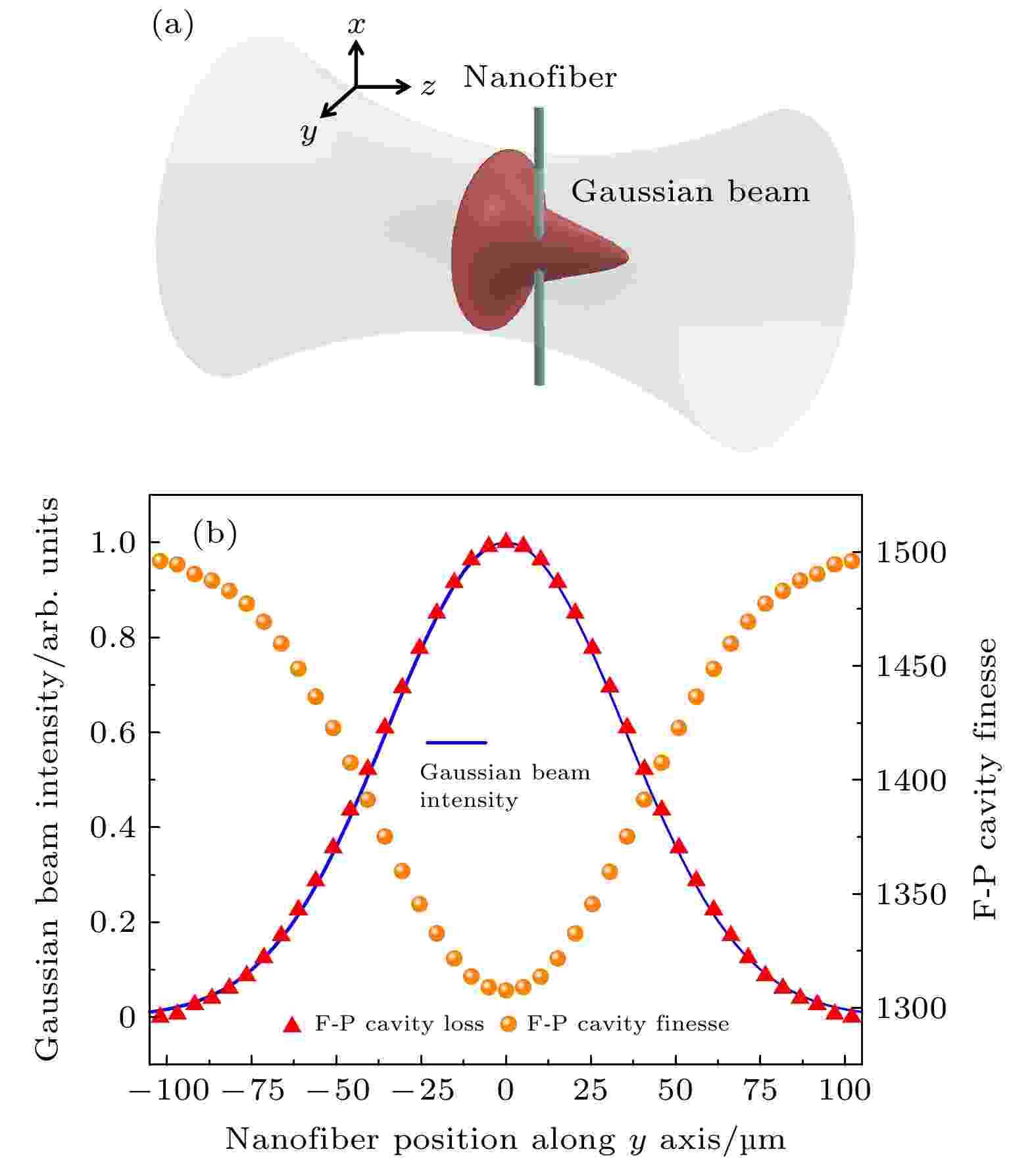
EDITOR'S SUGGESTION
2022, 71 (23): 234203.
doi:10.7498/aps.71.20221538
Abstract +
The composite cavity optomechanical system combining optical Fabry-Perot (F-P) cavities, particles, and micro/nano mechanical oscillators is becoming more significant in the researches and applications of the fundamental physics, quantum information processing, and precision measurement. Characterizing the mode field distribution of optical F-P cavity is significant prior to the application of optical F-P cavity. In this paper, we propose and demonstrate a method to measure the waist of an optical F-P cavity and to characterize the mode field distribution of the optical F-P cavity by using a nanofiber nondestructively. In experiment, a nanofiber is placed in the mode of the optical F-P cavity with a fineness of around 1500. The optical F-P cavity is composed of two mirrors each with high reflectivity of 99.8%. The radius of curvature of the each mirror is 50 mm. The cavity length is (
$ 80 \pm 4 $
) mm. The nanofiber is fabricated from a single-mode fiber by the flame-brush method. The nanofiber diameter is around 440 nm. The transmission spectra of the optical F-P cavity are measured by scanning the cavity length. The free spectrum ranges and the inner cavity losses can be obtained from the transmission spectra. First, the influence of the nanofiber on the optical F-P cavity fineness is investigated. The fineness as a function of nanofiber position along the radial direction of the optical F-P cavity is measured. The fineness caused by the nanofiber decreases to a minimum value of about 240. Second, it is investigated that the optical F-P cavity inner loss caused by the nanofiber as a function of the nanofiber position along the radial direction of the optical F-P cavity when the nanofiber is placed at the waist of the optical F-P cavity. The inner loss of the optical F-P cavity caused by the nanofiber is related to the intensity distribution of the optical F-P cavity mode field, which is predicted theoretically. Thus, by making the Gaussian fitting of the optical F-P cavity inner loss as a function of the nanofiber position, we can obtain a waist radius of the optical F-P cavity to be (
$ 72 \pm 1 $
) μm. This is in good agreement with the theoretical calculation. Finally, the mode field distribution of the optical F-P cavity along the cavity axis is characterized. This method can be used for precisely controlling the coupling between the particles on the surface of nanofiber and optical F-P cavity. Besides, this method provides a good platform for studying the hybrid optomechanical system combining cavities, photons and quantum emitters.

2022, 71 (23): 234206.
doi:10.7498/aps.71.20221454
Abstract +
The rare-earth doped micro/nano core-shell structure not only is beneficial to enhancing the upconversion emission intensity, but also can realize the fine control of luminescence color through the spatial separation of ions. In this work, a series of NaYF4@NaYF4core-shell (CS) microcrystals doped with different ion concentrations is constructed by using the epitaxial growth technology. The structure and morphology for each of the prepared microcrystals are characterized by X-ray diffractometer (XRD) and scanning electron microscope (SEM). The experimental results show that the prepared CS structures each have a pure hexagonal-phase crystal structure, and exhibit a disk-like shape. Under the excitation of 980 nm laser, the energy transfer characteristics of doped ions in single CS microcrystal are carefully studied by using a confocal microscope spectroscopy test system and changing the excitation position. The study shows that the ions doped in different regions of the CS microdisks exhibit different spectral characteristics when the excitation position is changed, which is mainly due to the different directions of excitation energy transfer in the CS structure. Based on the emission spectra of different positions and power variation spectra, it is proved that the excitation energy of the micron CS is mainly transmitted from outside to inside. Meanwhile, the colorful emission pattern of the CS microdisk is revealed by the corresponding optical waveguide model, which is mainly due to the optical waveguide effect. Therefore, by constructing different micron core-shell structures, the luminescence characteristics of microcrystals can be controlled and adjusted, which can provide important experimental reference for the applications of microcrystals in optoelectronic devices, optical coding and multicolor display.
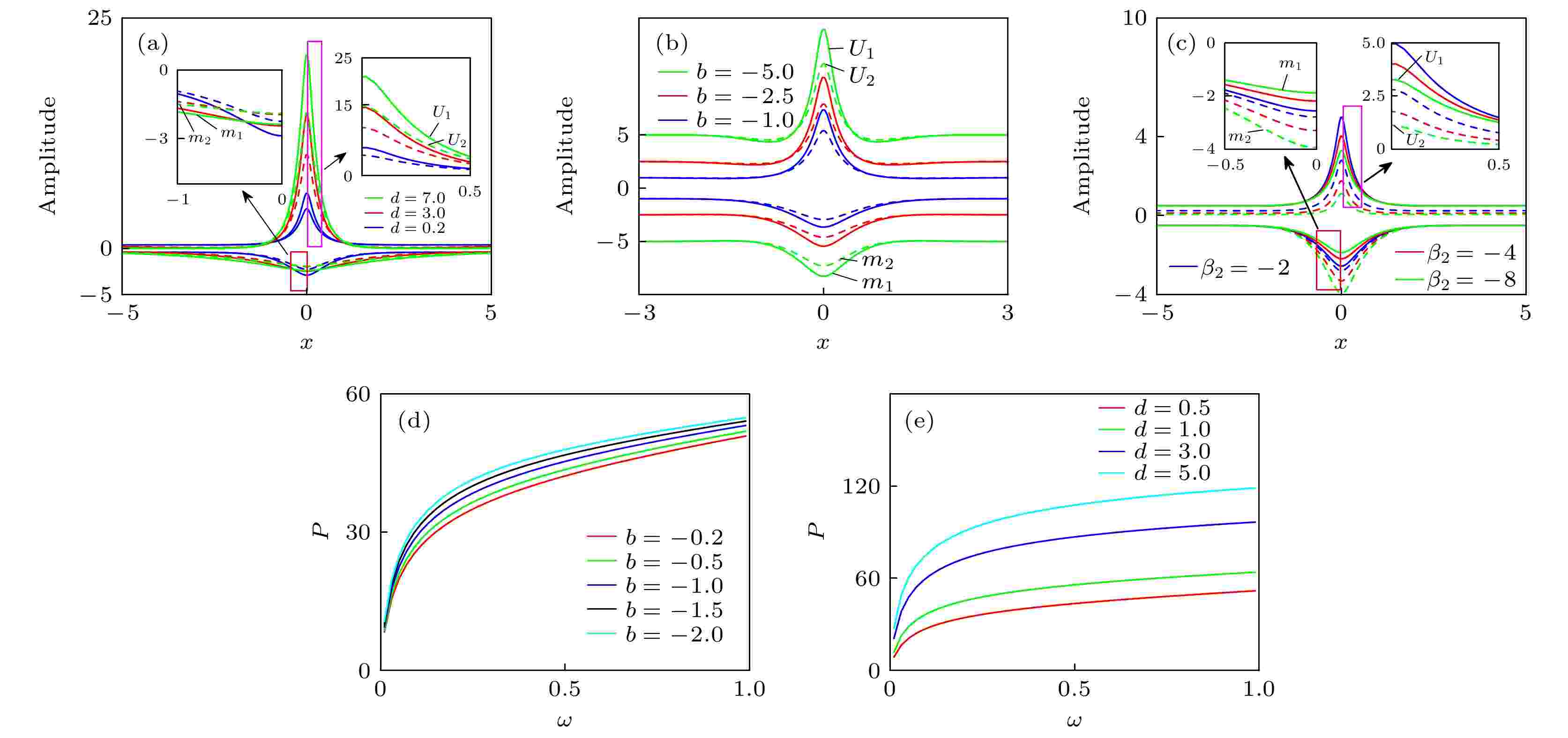
2022, 71 (23): 234207.
doi:10.7498/aps.71.20221273
Abstract +
In this paper, we investigate the characteristics of bright-like solitons, flat-topped solitons, and gray solitons in nonlocal nonlinear fused coupler. Firstly, the fundamental bright-like solitons with different parameters are obtained by the Newton iteration. It is found that the peak value and beam width of the ground state bright-like soliton increase with the enhancement of the nonlocality degree and nonlinear parameter, and they decrease with the propagation constant increasing. The power of the ground state bright-like soliton increases with the increase of the nonlocality degree and the width of coupling function, and it decreases with the propagation constant increasing. These numerical results can also be verified in the case of multipolar bright-like solitons. Secondly, by changing the coupled mode, the solutions of multipolar bright-like solitons, flat-topped soliton and grey solitons are obtained. The transmission stability of multipolar bright-like solitons, flat-topped soliton and grey solitons are studied. The stability of solitons is verified by means of linear stability analysis and fractional Fourier evolution. In the process of long-distance propagation, the propagation of bright-like solitons, gray solitons, and flat-topped soliton with one to three-pole symmetric peaks are stable, and the tripolar bright-like solitons with different soliton peaks and tripolar gray solitons are unable to transmit steadily. At the same time, it is found that the gray soliton with three poles or more is not easy to maintain its transmission stability. It is also found that the higher the grey scale of the gray soliton, the easier it is to realize stable transmission. Finally, it is found that the coupling function width not only affects the power of the soliton, but also realize the conversion among different soliton structures by adjusting the coupling function width.

2022, 71 (23): 234208.
doi:10.7498/aps.71.20221234
Abstract +
The research of hypersonic process is limited by the transition model, the turbulence model, and the computational complexity. At present the tunnel test is still a better way to investigate the hypersonic process than the computational fluid dynamic (CFD) method. In this work, the principle and structure of all-fiber photon Doppler velocimeter (PDV) are introduced. The PDV is based on laser Doppler effect and consists of an all-fiber Mach Zehnder interferometer and an optical antenna. The measurement accuracy and distance of PDV are tested, showing that the error can be controlled to be within 0.17 m/s when the velocity of piston is below 40 m/s. At the same time, the measured distance of PDV can reach 26.3 m. The continuous velocity of the free piston is measured by using the PDV in high enthalpy expansion tunnel of China aerodynamics research and development center (CARDC). During the tunnel tests, the PDV is placed next to the tunnel, and the optical antenna is installed behind the observation window of the tunnel and connected to a circulator by optical fiber. When the driving pressure of the tunnel is 1.3 MPa, the maximum numerical simulation velocity of the piston is 88.981 m/s, and the velocity is measured to be 88.810 m/s with a relative deviation of –0.19%; when the driving pressure of the tunnel is 2.7 MPa, the maximum numerical simulation velocity of the piston is 125.100 m/s, the measured velocity is 123.843 m/s, and the relative deviation is –1.00%. The piston reaches a maximum velocity before impacting on the tunnel, and then decelerates rapidly under the joint action of the driving pressure and compression wave. Therefore, the soft landing of the piston proves feasible, which is put forward by Stallkerin the 1960s. Finally, the reasons why PDV missed the impact velocity of piston is discussed. Through the analysis of received intensity, it is believed that the absorption, scattering and expansion of the laser beam caused by the strong driving pressure is the main reason.
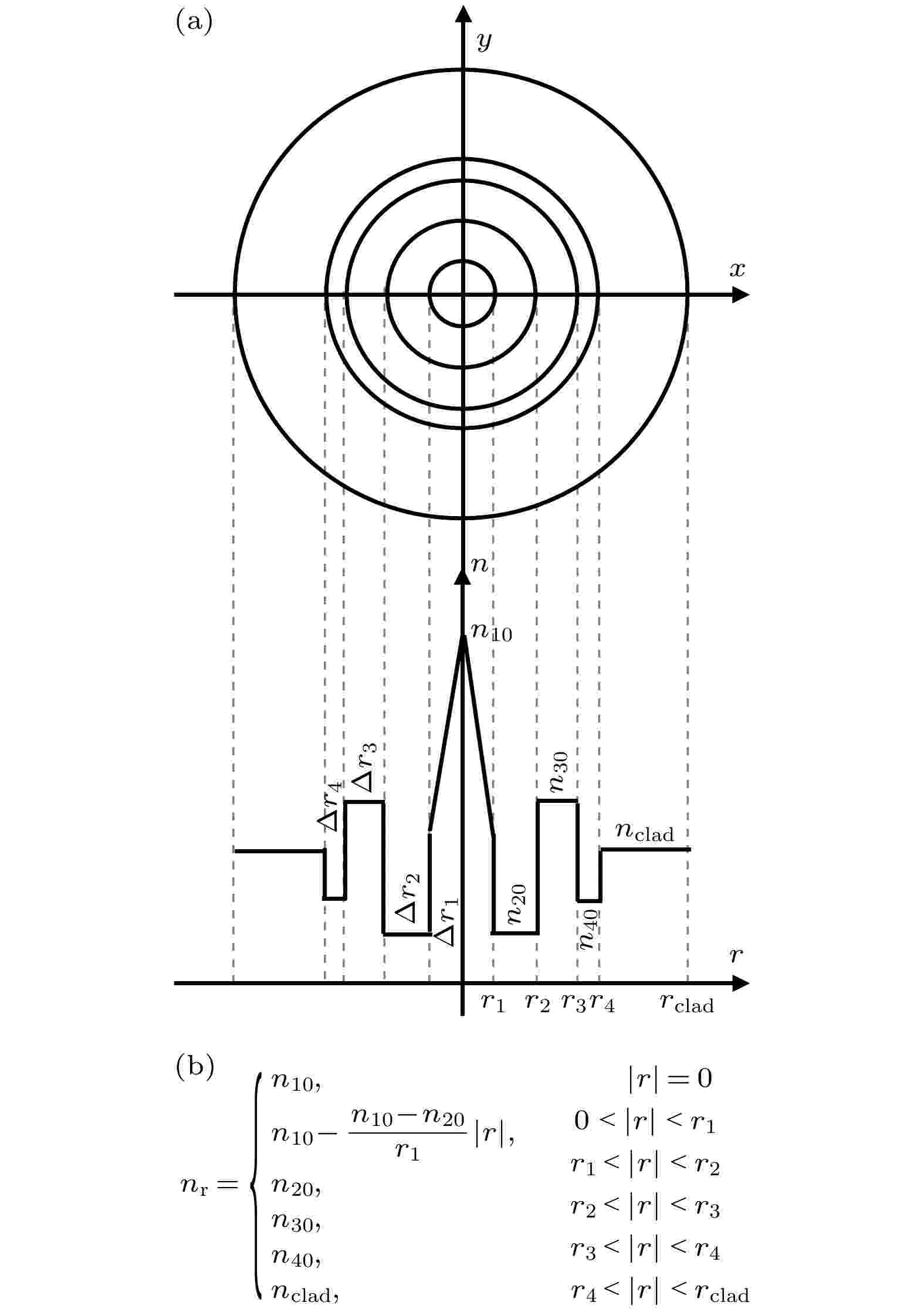
2022, 71 (23): 234209.
doi:10.7498/aps.71.20221115
Abstract +

2022, 71 (23): 234301.
doi:10.7498/aps.71.20221377
Abstract +
Noise is always a serious factor affecting people's quality of life. The most common sound-absorbing materials are porous materials, which work based on the principle that sound waves entering into the pores inside the material are subjected to air friction and viscous resistance, thus converting sound energy into heat. Porous materials have excellent performance of absorbing medium-frequency and high-frequency sound , but they are required to be thick enough to control the low-frequency sound waves with large wavelengths, which limits the application of porous materials in low-frequency noise control. In recent years, acoustic artificial structures have become a research hotspot, which can realize exotic effective acoustic parameters based on periodical structure or local resonance. Acoustic artificial structure provides a new material basis for noise control, in which Helmholtz resonator plays an important role because of its simple geometry. In this study, a broadband muffler is designed based on the second-order neck embedded Helmholtz resonator. In order to achieve low-frequency and broadband sound insulation with a limited number of units and structure length, the second-order resonator is chosen as a basic structure unit, which has a stronger low-frequency noise reduction capability and has one high-frequency transmission loss peak more than a conventional Helmholtz resonator. The acoustic characteristics and insulation performance of second-order resonators are analyzed through theoretical calculation, simulation calculation and experimental test. Then, based on the theoretical model and empirical rules, a broadband muffler composed of nine second-order resonators is designed by carefully adjusting the geometry parameters of each resonator. The three-dimensional printed resonators are installed on the side wall of a square standing wave tube for experimental measurement. In the experiment, the transmission loss curve of the muffler is measured by the two-load method. The result shows that the designed muffler has good sound insulation performances in a frequency range of 267–927 Hz, with the whole transmission loss above 20 dB and the maximum sound insulation up to 60 dB. The experimental result is consistent with the calculation result and simulation result. The muffler has simple structure and high practicability, which will have a wide application prospect in noise control engineering.
PHYSICS OF GASES, PLASMAS, AND ELECTRIC DISCHARGES
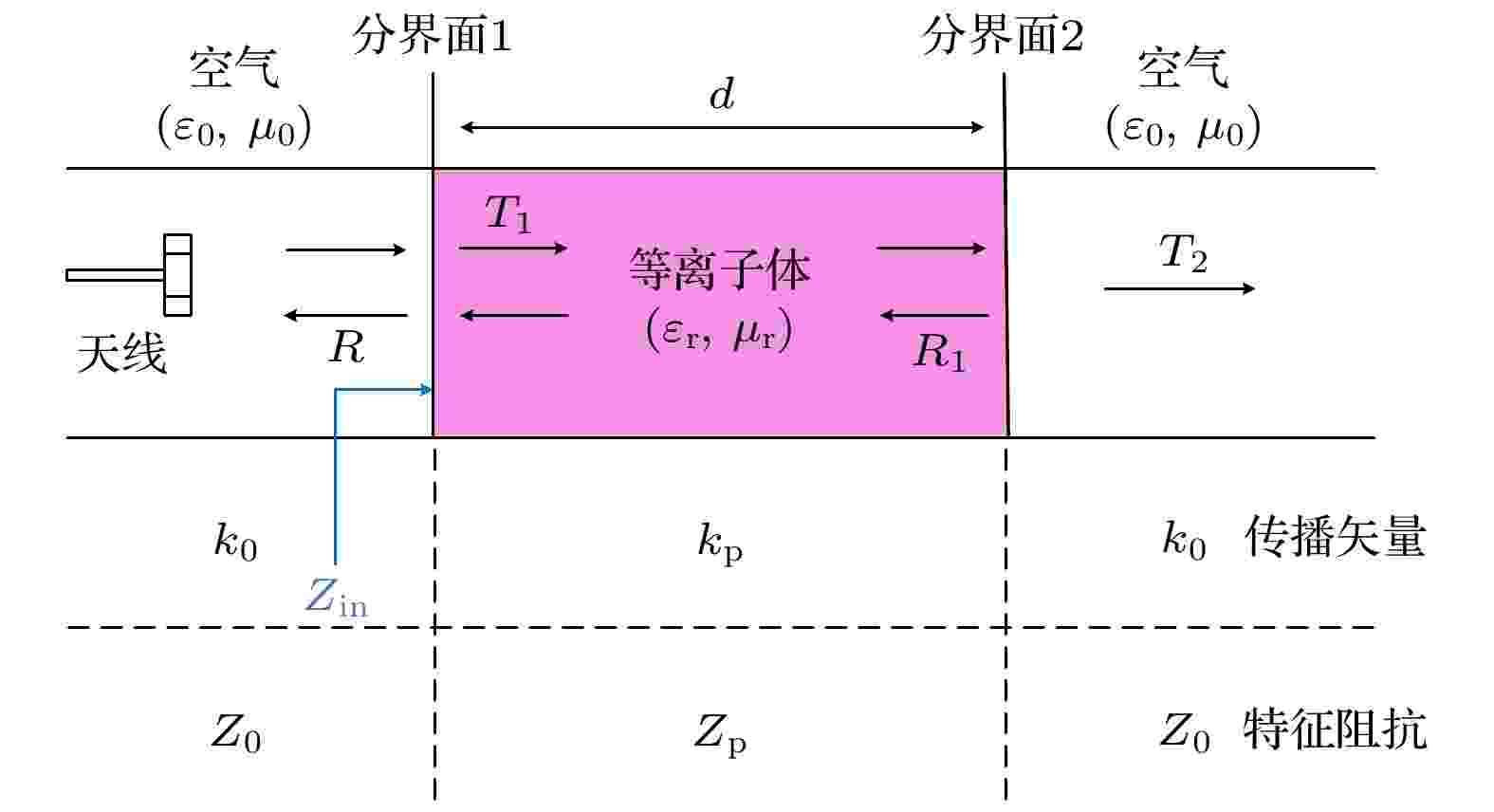
EDITOR'S SUGGESTION
2022, 71 (23): 235201.
doi:10.7498/aps.71.20221179
Abstract +
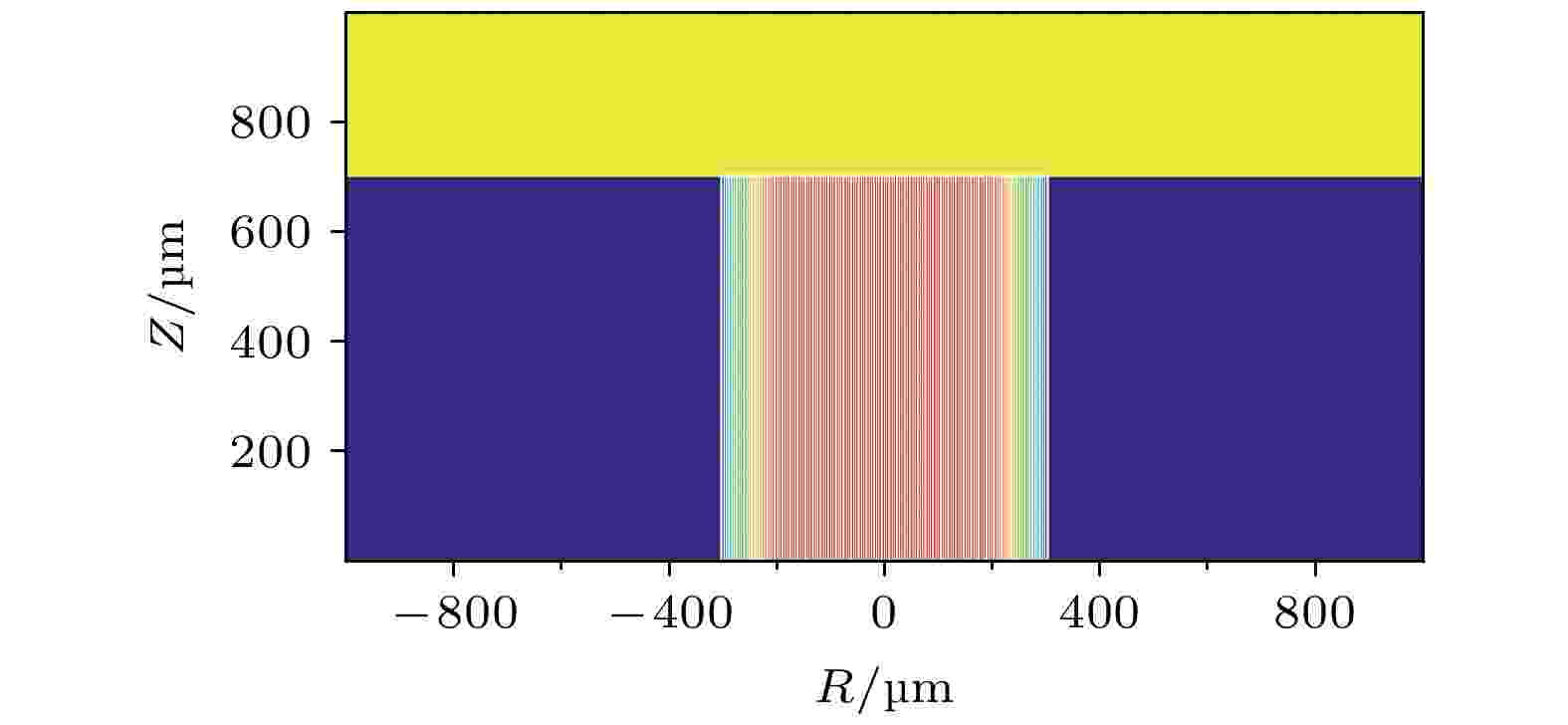
2022, 71 (23): 235202.
doi:10.7498/aps.71.20220870
Abstract +
Interaction of high-power laser with planar target is studied by using radiation-hydrodynamics simulation. When the laser interacts with the tungsten planar target, the laser energy deposition is uneven due to thermal filamentation instability and other reasons, and density fluctuations will appear in the front of the plasma, resulting in obvious plasma filamentation in the later stage. The researches of four materials, i.e. aluminum, copper, tungsten and gold, show that in the high-Zmaterial tungsten and gold, due to the strong radiative cooling effect, the filamentation phenomena of the density distribution, electron temperature distribution and pressure distribution obviously occur. The order of magnitude of filamentous plasma density is different from that of the surrounding plasma. The filamentation phenomenon is closely related to the non-uniform energy deposition of the laser and the radiative cooling effect, although the ray beam will cause inhomogeneity of the laser irradiation to a certain extent, this is not the main reason for the filamentation phenomenon observed in this paper. Owing to refraction, reflection and the thermal filamentation instability when the laser is transmitted in the ablation plasma, the laser energy is deposited unevenly, which generates instability seeds in the early stage of plasma formation. The radiative cooling effect then amplifies this instability seeds, creating a radiative cooling instability that eventually results in a filamentous distribution of physical quantities such as plasma density, temperature, and pressure. This filamentation phenomenon destroys the uniformity of the plasma to a certain extent, and lays the seeds for the growth of fluid instability, which will seriously affect fusion-related research. It is shown that radiative cooling is crucial to the filamentation phenomenon, which causes uneven distribution of the plasma pressure during the evolution of the plasma, thereby affecting its transverse motion and enhancing the density fluctuation. After the laser irradiation ends, the density fluctuation gradually develops into filamentations. We also find that the clear filamentation occurs only for high-Zmaterials like tungsten and gold, but not for the moderate-Zmaterials like aluminum and copper. This can be attributed to the fact that radiative cooling is stronger for the high-Zmaterials. Studying the filamentation effect in laser-irradiated planar targets can contribute to understanding the instability in laser plasma, and then suppressing this instability and improving the gain of fusion. The results here can thus be of reference significance to the research of laser fusion, laboratory astrophysics, and other applications of intense-laserdriving.
CONDENSED MATTER: STRUCTURAL, MECHANICAL, AND THERMAL PROPERTIES
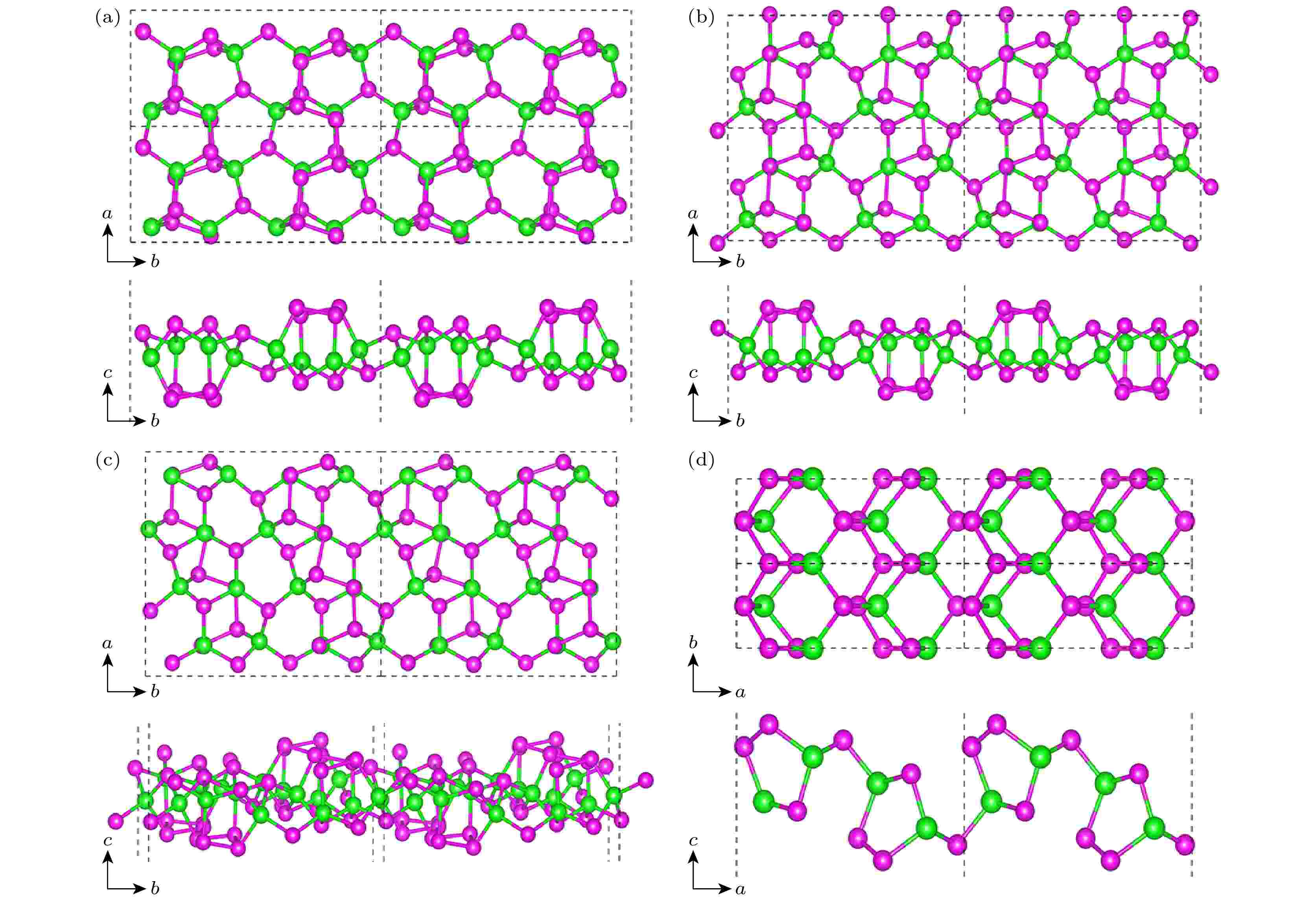
2022, 71 (23): 236101.
doi:10.7498/aps.71.20220853
Abstract +
Since the successful preparation of single-layer graphene in 2004, the two-dimensional (2D) materials have received widespread attention. Driven by this research upsurge, many kinds of 2D compound materials with different properties have been discovered one after another, and some of these 2D materials have a variety of allotropes, showing more abundant properties. Our computational studies focus on searching for new stable 2D SiP2allotropes, and studying their binding energy, phonon dispersions, electronic band structures, strain-dependent bandgap modulation behaviors, piezoelectric properties, etc. In this paper, three novel 2D SiP2allotrope structures, i.e. α-SiP2, β-SiP2, and γ-SiP2, are found by the random prediction method of crystal structure based on group theory and graph theory (RG2). Their stabilities and electronic properties are investigated by using the first-principles method based on the density functional theory. The results show that the three novel SiP2structures are stable thermodynamically, dynamically and mechanically. Using the GW calculations, three novel SiP2structures possess indirect band gaps of 2.62, 2.99 and 3.00 eV, respectively. Their band gaps are feasible to modulate effectively by applying strain. The band gaps of the three novel SiP2isomers are reduced significantly when subjected to a large strainused, and the three novel SiP2isomers exhibit indirect-to-direct bandgap transitions when experienced by a certain strain along the x-axis direction. These properties make them potential materials that are suitable for serving as nanoscale photocatalysts. Moreover, three SiP2isomers have non-centrosymmetric crystal structures, which enable them to exhibit their piezoelectricities. Therefore, we study their piezoelectric properties by combining the Berry phase theory. Our studies show that three novel 2D SiP2allotropes have good piezoelectric properties. The piezoelectric coefficient of the α-SiP2isomer and the β-SiP2isomer are both larger than that of h-BN, and they are comparable to the counterpart of MoS2. These novel structures promise to be used to fabricate nano-electromechanical devices for micro- and nano-scaled electromechanical conversion and electromechanical sensing and controlling.
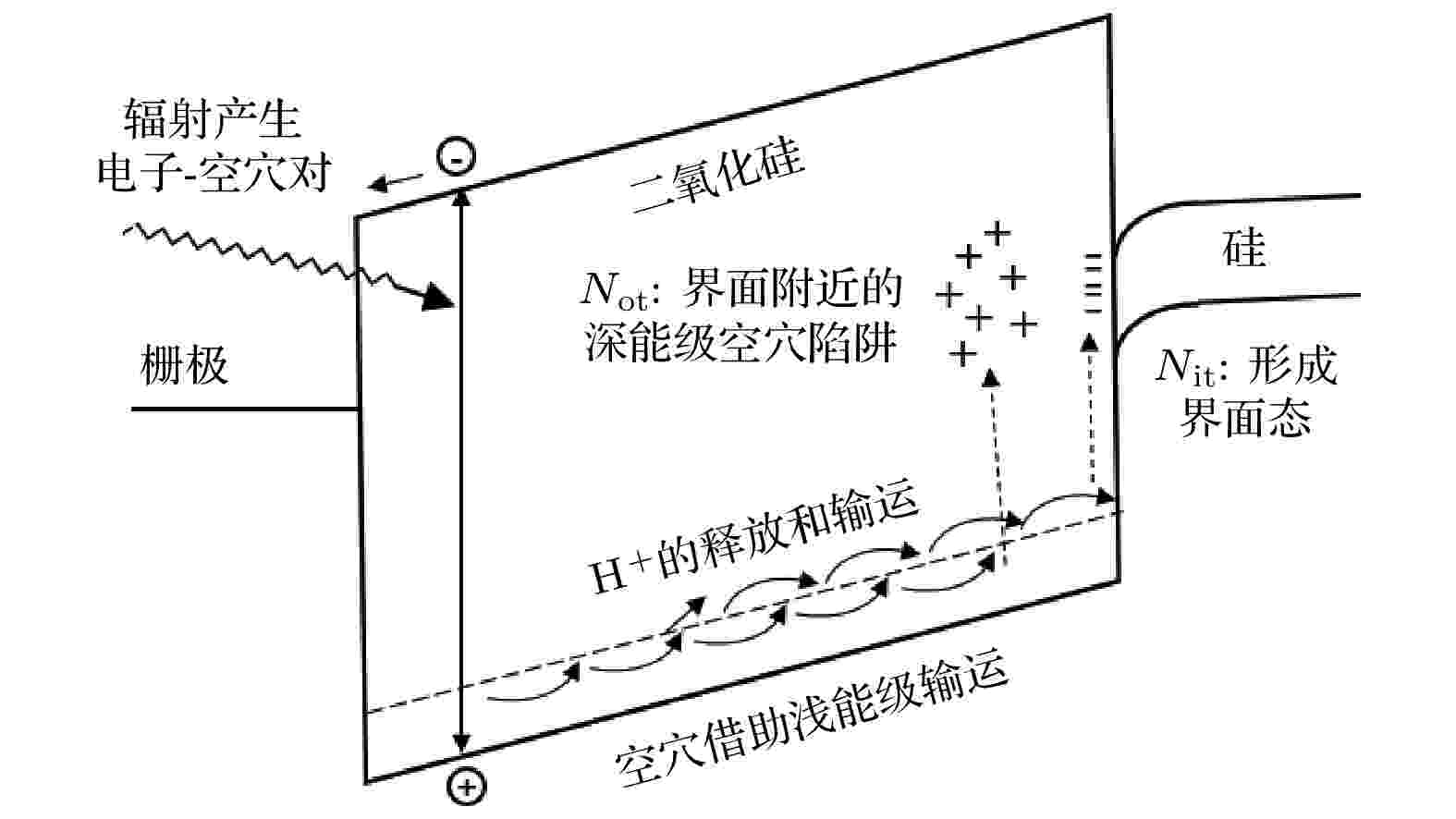
2022, 71 (23): 236102.
doi:10.7498/aps.71.20221172
Abstract +
Radiation-hardened embedded flash technology is widely used in aerospace field. The high voltage nMOSFET is the key device to be hardened as it is the most sensitive device to total ionizing dose (TID) effect. In this study, the shallow tench isolation (STI) sidewall implantation method is used to harden 5 V nMOSFET for 180 nm eFlash process. Through the study of the TID response of the device, two problems emerge in this hardening technology. Firstly, the hardening ions are implanted after STI trench etching, the doping profile is influenced by the following thermal process, resulting in lower doping concentration at STI edge. The device fails to work due to high leakage current after 1×105rad (1 rad = 10–2Gy) (Si) radiation. Secondly, the hardening ions that are implanted in drain region reduce the breakdown voltage of PN junction on the drain side. Device cannot satisfy the actual requirement in the circuit. To solve these problems, we propose a new device hardening method called partial channel ion implantation. Comparing with previous method, in order to reduce the doping redistribution effect, we adjust the hardening ion implantation to an extent after the oxidation of gate oxide. Moreover, an extra mask is introduced to determine the hardening implantation region to avoid ion implantation on the drain side of the device. Therefore, the drain breakdown voltage will not be influenced by hardening implantation. By using this new hardening technology for high voltage NMOS, the device can maintain the typical design of strip-type gate. The hardening method is compatible with general process technology and does not influence the electrical parameters of the device obviously. The results show that with the partial channel ion implantation method, the drain leakage of the device is kept at a pico-ampere level after 1.5×105rad (Si) radiation. That is five orders of magnitude lower than that obtained by using previous STI implantation hardening technology.
CONDENSED MATTER: ELECTRONIC STRUCTURE, ELECTRICAL, MAGNETIC, AND OPTICAL PROPERTIES
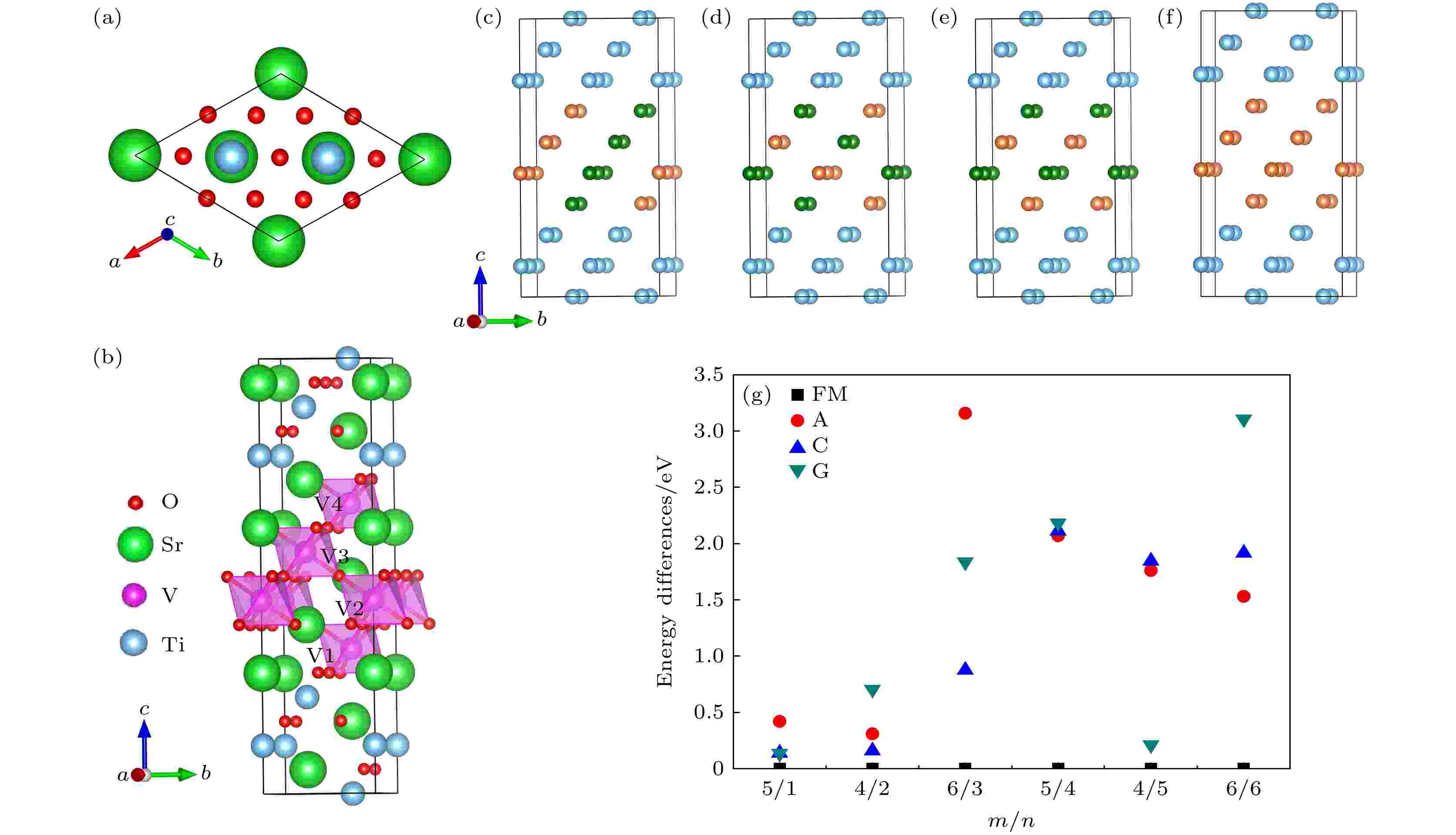
2022, 71 (23): 237301.
doi:10.7498/aps.71.20221765
Abstract +
In this work, the first-principle calculations based on density functional theory (DFT) are employed to investigate the electronic and magnetic properties of SrVO3/SrTiO3(111) superlattices. The studies show that the transition from ferromagnetic half-metal to ferromagnetic insulator can be achieved by adjusting the thickness of the spacer-layer SrTiO3. The interlayer coupling between the SrVO3sublayers can occur across two unit-cell (uc) distance of SrTiO3, and the superlattice is ferromagnetic half-metal. When the SrTiO3sublayers are 3uc, a small band gap (about 0.28 eV) appears in the superlattice. When the SrTiO3sublayers are more than 3uc, the superlattice has a large band gap and exhibits ferromagnetic insulating state. Further studies show that the Ti-V mixed defects play an important role in realizing the transition of metal-insulator. Compared with the ideal interface, the Ti-V mixed interface can inhibit the interlayer coupling and induce the transition of ferromagnetic half-metal to ferromagnetic insulator. These results provide a theoretical basis for the transition of ferromagnetic half-metal to ferromagnetic insulator by adjusting the number of SrTiO3layers in SrVO3/SrTiO3(111) superlattices.
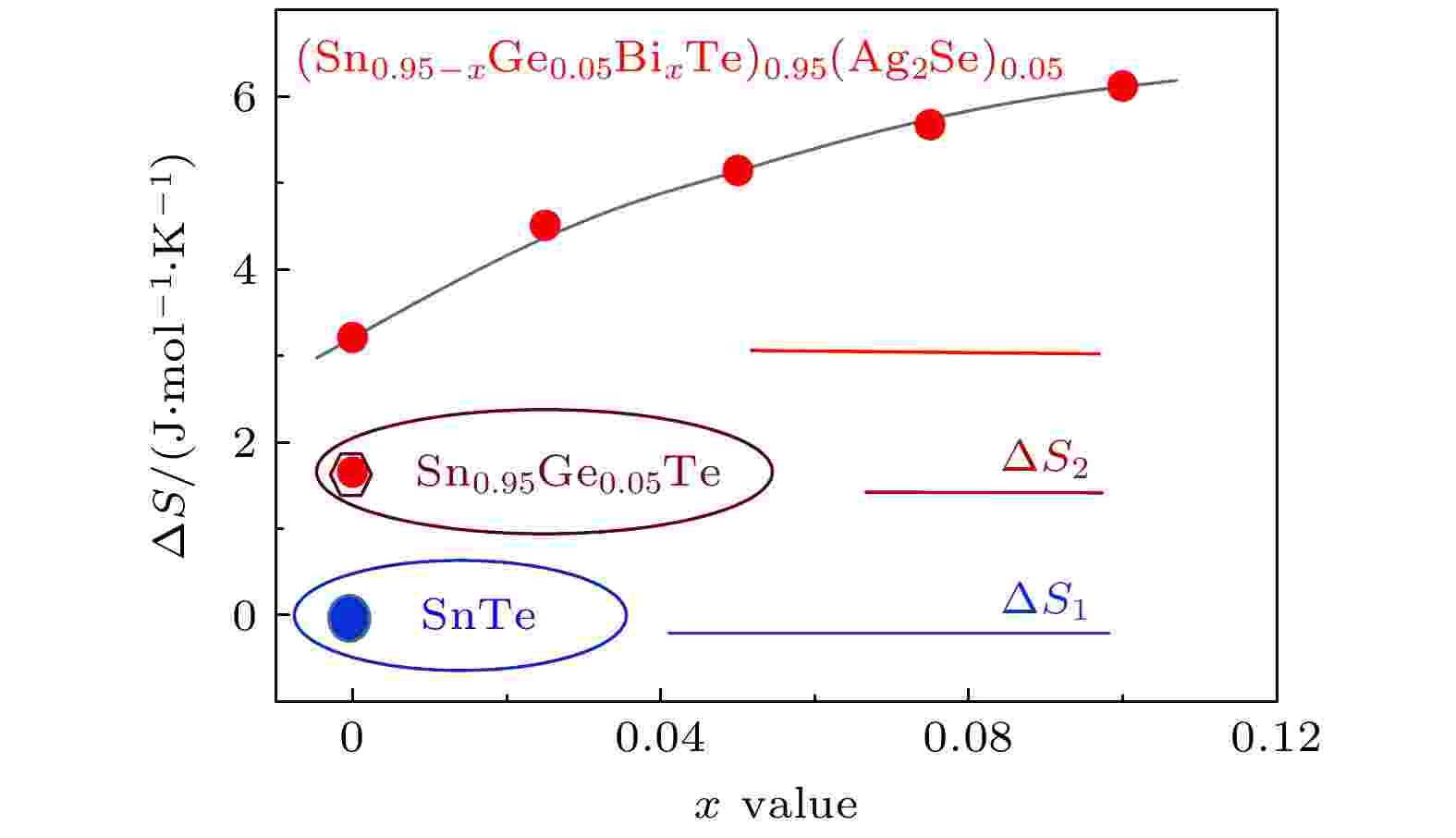
2022, 71 (23): 237302.
doi:10.7498/aps.71.20221247
Abstract +
SnTe is a good alternative to PbTe in the thermoelectric (TE) applications, in that it is a compound with no toxic element Pb. Besides, the compound SnTe has a relatively narrow bandgap (0.3–0.4 eV) and high Sn vacancy concentration (Snv) as well. Accordingly, it gives a high carrier concentration (1021cm–3) at room temperature (RT), which is not favorable for thermoelectrics, therefore the regulation of both the electronic and phonon scattering mechanisms is strongly required. Up to date, there have been many approaches to improving its TE performance. The typical examples are those involving the valence band convergence, nanostructuring, substitutional and interstitial defects, and lattice softening, which are all practical and effective to improve the TE performance of SnTe. However, in this work the entropy is taken as an indicator to design the SnTe-based TE material with multicomponents and then optimize its TE performance. The detailed scheme involves the chemical composition design step by step. At first, SnTe alloys with 5% GaTe to form a solid solution Sn0.95Ge0.05Te, aiming to increase the solubility of the foreign species. The second step is to form another solid solution (Sn0.95Ge0.05Te)0.95(Ag2Se)0.05via the alloying Sn0.95Ge0.05Te with 5% Ag2Se. The purpose of this step is to reduce the p-type carrier concentration of the system, for the species Ag2Se is a typical n-type semiconductor. The last step is to form a series of solid solutions (Sn0.95–xGe0.05BixTe)0.95(Ag2Se)0.05by substituting different amounts of Bi on Sn in (Sn0.95Ge0.05Te)0.95(Ag2Se)0.05, to further enhance the configurational entropy (ΔS). Because of the above approaches, both the carrier concentration and thermal conductivity decrease while the highest TE figure of merit (ZT) increases from 0.22 for the pristine SnTe to ~0.8 for the alloy (Sn0.95–xGe0.05BixTe)0.95(Ag2Se)0.05(x= 0.075). This result proves that the entropy engineering is a practical way to improve the TE performance of SnTe, and at the same time it illustrates that it is very important to harmonize the entropy engineering with other electronic and phonon scattering mechanisms, in order to improve the TE performance of SnTe effectively.
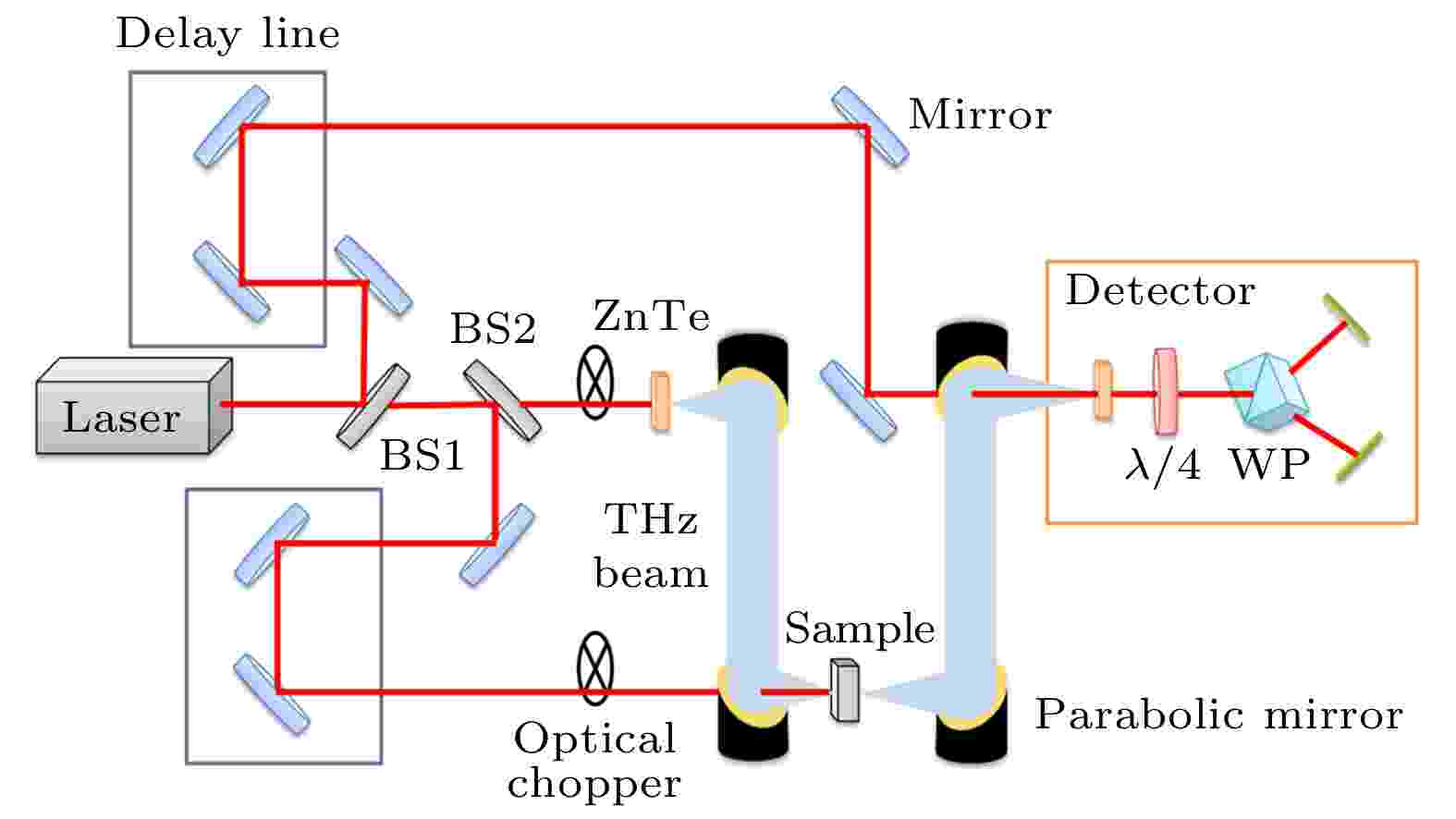
2022, 71 (23): 237303.
doi:10.7498/aps.71.20221586
Abstract +
The quasi-two-dimensional van der Waals intrinsic ferromagnetic semiconductor CrGeTe3possesses both a narrow semiconductor band gap and ferromagnetic properties, which makes it have a broad application prospect in the fields of spintronics and optoelectronics. In recent years, CrGeTe3has received extensive attention from researchers. To the best of our knowledge, so far, these studies have mainly focused on the optical response in near infrared and visible light range, but little has been done in THz frequency range. Therefore, it is upmost importance to obtain the complex dielectric constant as well as the photocarrier dynamics of the CrGeTe3at the THz frequency. Herewith, we use time-domain THz spectroscopy and time-resolved THz spectroscopy to investigate the fundamental properties of the CrGeTe3crystal in the THz range, including refractive index and absorption coefficient in THz frequency, as well as the THz photocarrier dynamics under 780-nm optical excitation. The fundamental characterizations are carried out on a 33-μm-thick CrGeTe3wafer by Fourier infrared spectroscopy, X-ray diffraction and Raman scattering. It is concluded that the CrGeTe3wafer shows an indirect band gap of 0.38 eV and good crystalline quality. The THz time domain spectroscopy presents that the CrGeTe3wafer has a refractive index and an absorption coefficient of 3.2 and 380 cm–1, respectively, both of which show almost negligible dispersion in the investigated THz frequency. Under the optical excitation of 780 nm, the subsequent photocarrier relaxation can be well reproduced by a double exponential function: the fast relaxation shows a lifetime of 1–2 ps, depending on pump fluence, which is contributed by electron-phonon coupling; the slow relaxation has a typical lifetime of 7–8 ps, which is due to phonon-assisted electron-phonon recombination. The Pump fluence and delay time dependence of THz photoconductivity dispersion can be well fitted with Drude-Smith model, and the fitted results demonstrate that the plasma frequency increases with pump fluence in a fixed delay time, and then decreases with delay time increasing at a fixed pump fluence. The momentum scattering time shows that it decreases with pump fluence increasing, and increases with delay time increasing. These pump fluence and delay time dependent fitting microscopic parameters show similar tendencies to those of a conventional semiconductor. In a word, the experimental study here demonstrates that the narrow band-gap CrGeTe3wafer is well transparent and disperionless in a THz frequency range. From the above bandgap photoexcitation it follows that the wafer shows fast response and high modulation depth in THz radiation, providing a useful reference for the application of CrGeTe3in optoelectronics and related fields.

2022, 71 (23): 237401.
doi:10.7498/aps.71.20221612
Abstract +
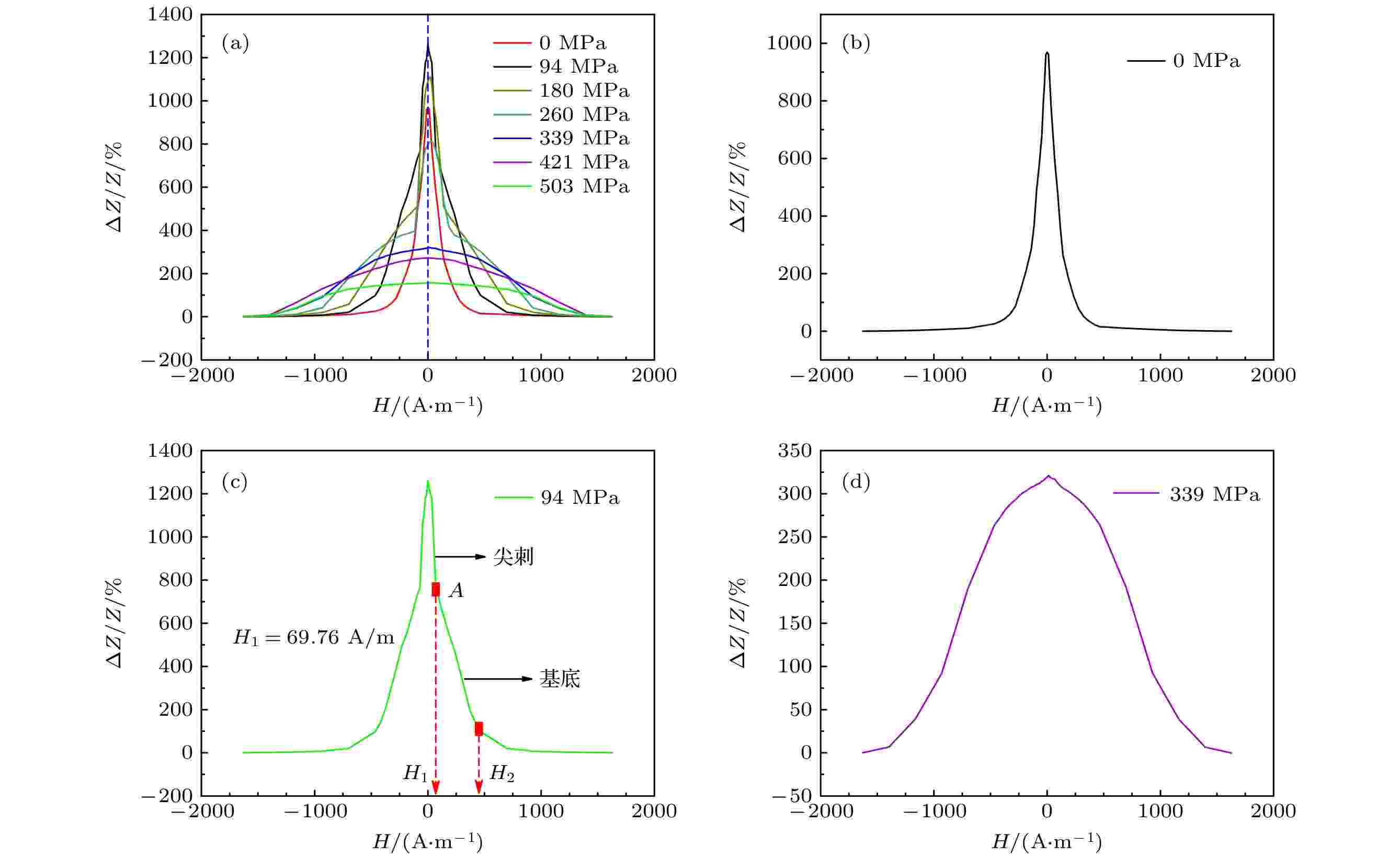
2022, 71 (23): 237501.
doi:10.7498/aps.71.20221376
Abstract +
Fe-based amorphous and nanocrystalline alloys are considered as the preferred dual-green energy-saving materials due to their unique magnetic properties, such as high permeability, low coercivity, and near-zero saturation magnetostriction. As such, they have received extensive attention in applications like magnetic core material for high-frequency transformers, common model chokes, ground fault interrupters, and rotors in motors, over the past decades. In this work, Fe64.8Co7.2Nb4Si4.8B19.2(in atom percent) amorphous alloy ribbons are prepared by using the single roller quenching method, then subsequently subjected to multi-field coupling heating treatment in the air which includes heating by Joule heating effect and tensile stress field. Furthermore, the longitudinally driven giant magneto-impedance effect and magnetic domain structures of ribbons are observed by using 4294A impedance analyzer and magnetic force microscopy, respectively. The magneto-crystalline anisotropy field and stress anisotropy field of ribbons are analyzed by using X-ray diffraction, random anisotropy model, and numerical fitting. Meanwhile, the concept of magnetic anisotropy competing factor (k) is proposed, from the viewpoint of magnetic anisotropy, a mechanism for regulating giant magneto-impedance effect of ribbons prepared with multi-field coupling is studied. It is found that the longitudinally driven giant magneto-impedance effect gradually transforms from the single peak to dome-like with tensile stress increasing. However, a spike and dome-like giant magneto-impedance effect appears during such transformation, which is composed of two parts: spike-like top and dome-like base. Based on the magnetic domain structure of ribbons, it is found that the typical stress-annealed transversal magnetic domain structure is observed in ribbons of
$k \leqslant 0.147$
, while nucleation and splitting phenomenon of new domains are observed at the transversal magnetic domain wall in ribbons ofk> 0.147. Both longitudinally driven giant magneto-impedance effect and domain structures provide evidence to support the competing inhibition effect of magnetic anisotropy which exists in Fe-based alloy ribbon. Therefore, it is suggested that Fe-based alloys exhibit excellent stress-sensitive properties that can be understood by the competing inhibition effects of magnetic anisotropy. It is further shown that the competing inhibition effect of magnetic anisotropy is the main reason for regulating the giant magneto-impedance effect of soft magnetic materials. This multi-field coupling Fe-based alloy has good application prospects in regulating magnetic properties of magnetic materials.
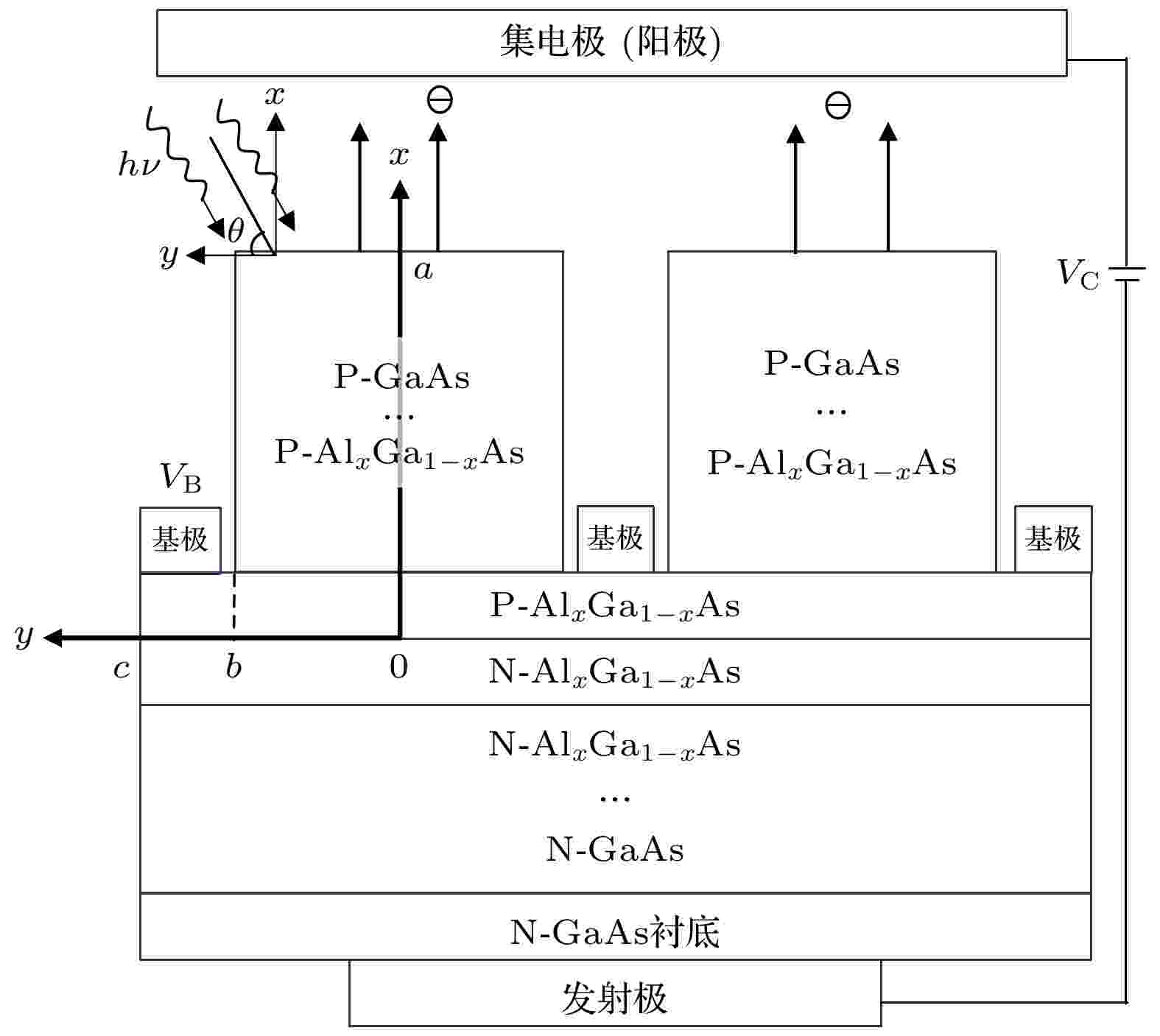
2022, 71 (23): 237901.
doi:10.7498/aps.71.20221330
Abstract +
In order to obtain high emission current efficiency of the AlGaAs/GaAs NEA array cathode, this array cathode has two ways to form electron emission, i.e. optical injection and electrical injection. The two-dimensional continuity equation of electronic transport in the variable bandgap emission array is solved numerically by using the finite volume method thereby obtaining the emission current and emission current efficiency. Simulation obtains the optimal parameter range for each layer of the AlGaAs/GaAs NEA array cathode under both optical injection and electrical injection. The results show that the optimal angle of incident light for the array cathode under light injection is 10°–30° for selecting an array micro-nano column with a duty cycle of 2/3. Under the condition of light injection, the P-type variable bandgap AlGaAs layer array micro-nano column height ranges from 0.3–0.6 μm. Under the condition of electrical injection, the height of the micro-nano column of the P-type variable bandgap AlGaAs layer array is 0.1–0.3 μm. The optimal thickness range of N-type variable bandgap AlGaAs layer, N-type AlGaAs layer, and P-type AlGaAs layer under light injection are 0.5–2.5 μm, 0.5–1.0 μm and 0.2–0.5 μm, respectively. The optimal thickness range of N-type variable bandgap AlGaAs layer, N-type AlGaAs layer, and P-type AlGaAs layer under electrical injection conditions are 2–3 μm, 0.8–1.2 μm and 0.1–0.3 μm, respectively. The optimal doping concentration of P-type AlGaAs layer and N-type AlGaAs layer under light injection are range from 5×1018to 1×1019cm–3and from 1×1018to 5×1018cm–3, respectively. The optimal doping concentration of the P-type AlGaAs layer and the N-type AlGaAs layer under electrical injection range from 1×1018to 5×1018cm–3and from 5×1017to 1×1018cm–3, respectively. The maximum efficiency of the emission current under the light injection is 35.04%, and the maximum emission current per unit length is 10.3 nA/μm. The maximum efficiency of the emission current under electrical injection is 31.23%, and the maximum emission current per unit length is 105.5 μA/μm. Electric injection cathode does not need expensive and complex drive laser system, and the light injection control mode is simple, so light injection or electrical injection control mode can be chosen as needed. The research of array cathode, which integrates the advantages of many advanced technologies, is of great significance for enriching the cathode array cathode emission theory and expanding its application field.
INTERDISCIPLINARY PHYSICS AND RELATED AREAS OF SCIENCE AND TECHNOLOGY

2022, 71 (23): 238501.
doi:10.7498/aps.71.20220824
Abstract +
With the shrinking of semiconductor technology and the increasing of integrated circuits, electrostatic discharge (ESD) as a common natural phenomenon has become one of the main reasons for the failure and reliability reduction of electronic products in integrated circuits. A novel dual-direction ESD device (PNP_DDSCR) with embedded lateral PNP transistor is proposed for diminishing ESD damage. The response process and current transportation of PNP_DDSCR under different ESD stress modes are investigated. Comparative analyses between conventional DDSCR and PNP_DDSCR are executed by TCAD simulation. On the stage of device triggering, the embedded lateral PNP transistor inner DDSCR system provides triggering current for device. The injection efficiency of parasitic transistor in the DDSCR system is improved, and the positive feedback system is promoted. Thus, the holding voltage of PNP_DDSCR is higher than that of conventional DDSCR. At the same time, an extra triggering path introduced by embedded lateral PNP transistor of PNP_DDSCR makes the total triggering path of device shorten. Therefore, the transient overshoot voltage of PNP_DDSCR is lower than that of DDSCR. For thermal performance, most of the heat first accumulates near the lateral PNP transistor , and then the peak point of heat turns to main SCR path with the conduction of PNP_DDSCR. The heat accumulation in PNP_DDSCR is shared by the path of embedded lateral PNP transistor. As a result, the average temperature in PNP_DDSCR is lower than that in DDSCR and the ability of PNP_DDSCR to dissipate heat is more perfect. Comparing with DDSCR, the conclusions are obtained. Under the condition of transmission line pulse (TLP) test simulation analyses, the triggering voltage is reduced by 31%, the holding voltage is increased by 16.8%, the ESD design window is optimized by 44.5%, and on-resistance is lower. When TLP stress is 2.67 A, the average temperature of PNP_DDSCR is much lower than that of traditional DDSCR in the whole conduction process. With the increase of pulse lasting time, average temperature difference between two devices becomes great further. According to the very fast TLP (VF-TLP) testing results, clamping capability of PNP_DDSCR under transient overshoot voltage is more stable under the condition of fast turn-on speed. When the VF-TLP stress is 0.1 A, the overshoot voltage of PNP_DDSCR device is the 37% of that of DDSCR device while the PNP_DDSCR maintains a relatively fast triggering speed. Thus, the ESD protection capability of PNP_DDSCR is superior.


















